How to spend five days in Japan? That seems like a laughable question. Even five days in the Tokyo area is too short.
We were limited to five nights for a reason:
- We needed to catch a cruise from Japan.
- We wanted to be in Bangkok for Songkran so we couldn’t leave Thailand early to enjoy more time in Japan.
- We wanted to get a good deal using miles on a business class fare from Bangkok to Tokyo.
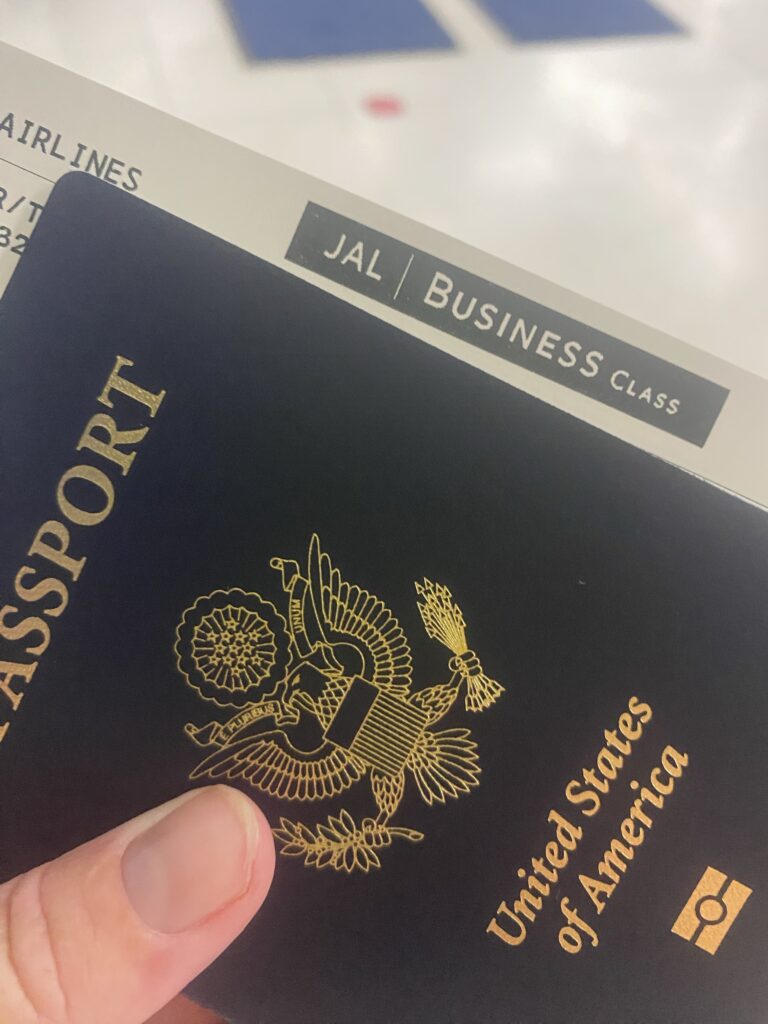
With all this in mind we used 30,000 American Airlines miles per person to book a business class flight on Japan Airlines. We were so excited to fly in a fancy class seat internationally! (I had flown business class once before from Korea to Hong Kong. The ticket counter guy upgraded me and I didn’t realize it until I boarded. It wasn’t that fancy but it was really nice and I didn’t pay for it.)
So we got up quite early (5 AM!!) and headed to BKK via Grab taxi. We wanted to be sure we gave ourselves plenty of time to get through security and immigration, with time left over to enjoy the business class lounge.
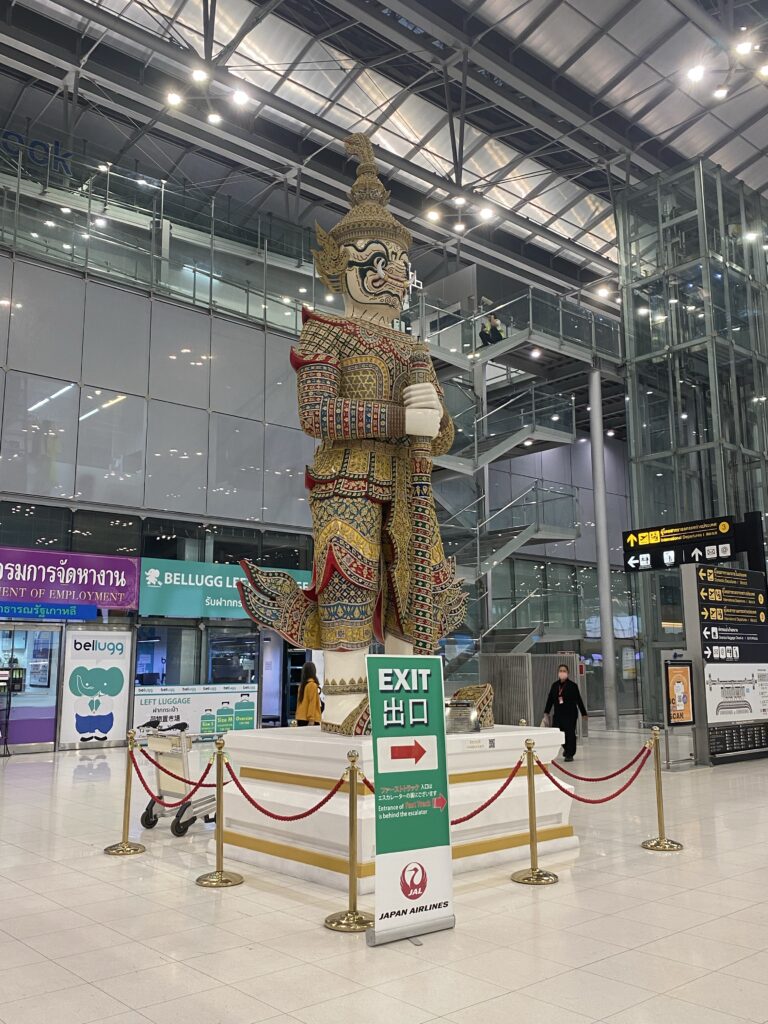
Because of our seats we were able to use the priority lines and we whipped through security and passport control in under 15 minutes.
This gave us even more time to enjoy Prosecco and breakfast in the lounge. It’s airport time, the bar is always open.
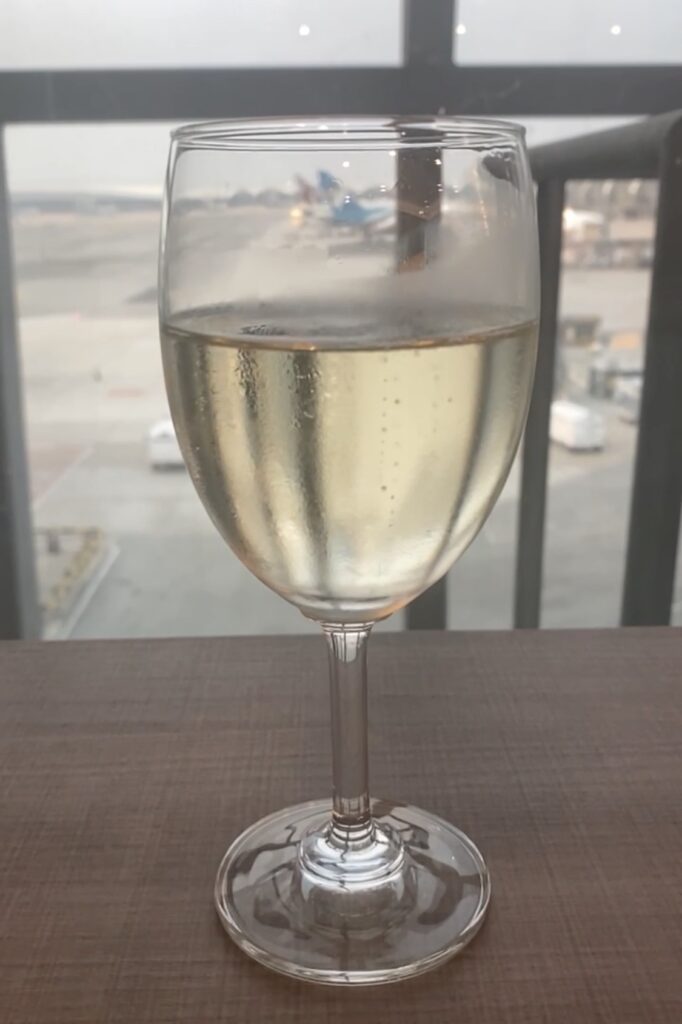
We boarded the plane and found our seats easily. There were two cabins of business-class seats and we were the only ones in the second cabin! It really felt exclusive. Business class is a 1x2x1 set of pod seats. We chose window seats in the same row, meaning that we were separated by the set of middle seats (and the walls that enclose them). The only difficult thing was having to walk around the entire set of middle seats to get to each other.
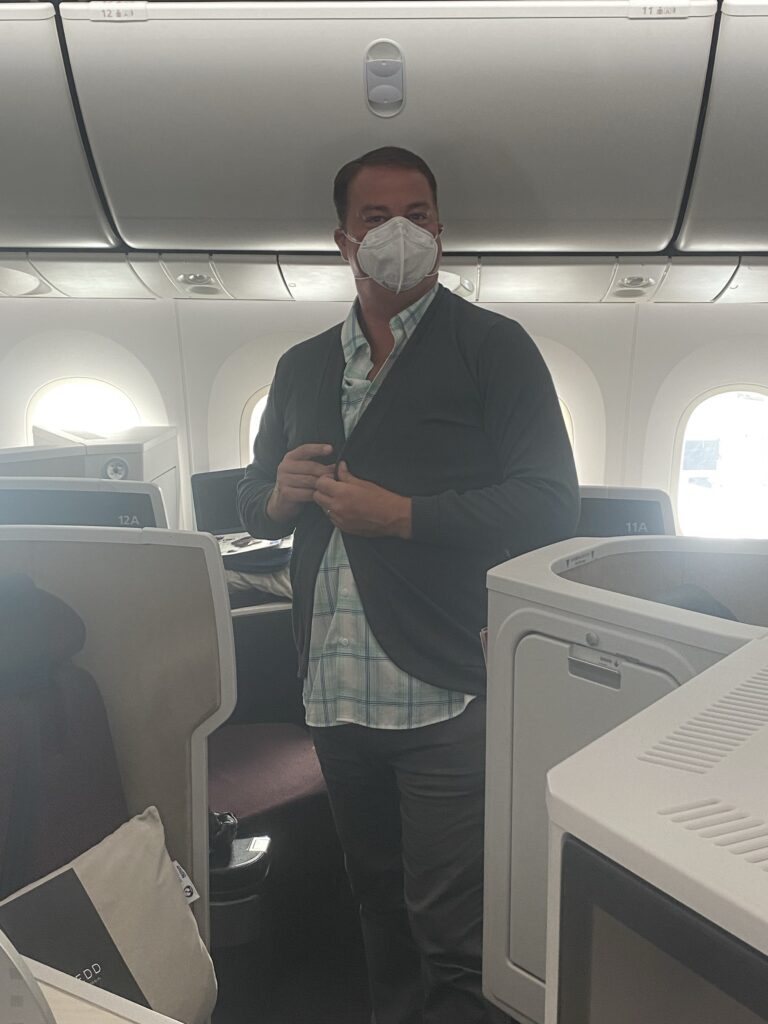
I worked my way through the delicious wine list while watching Top Gun: Maverick. I’d been wanting to watch it for a while and it seemed fitting while sitting in a plane. It was a good movie but I was not prepared to grieve so much over Goose. I know he’s a fictional character but it felt like I’d lost my BFF. I’ve also read that people cry more at movies in the sky than they would when watching on the ground. Based on my track record I believe it!
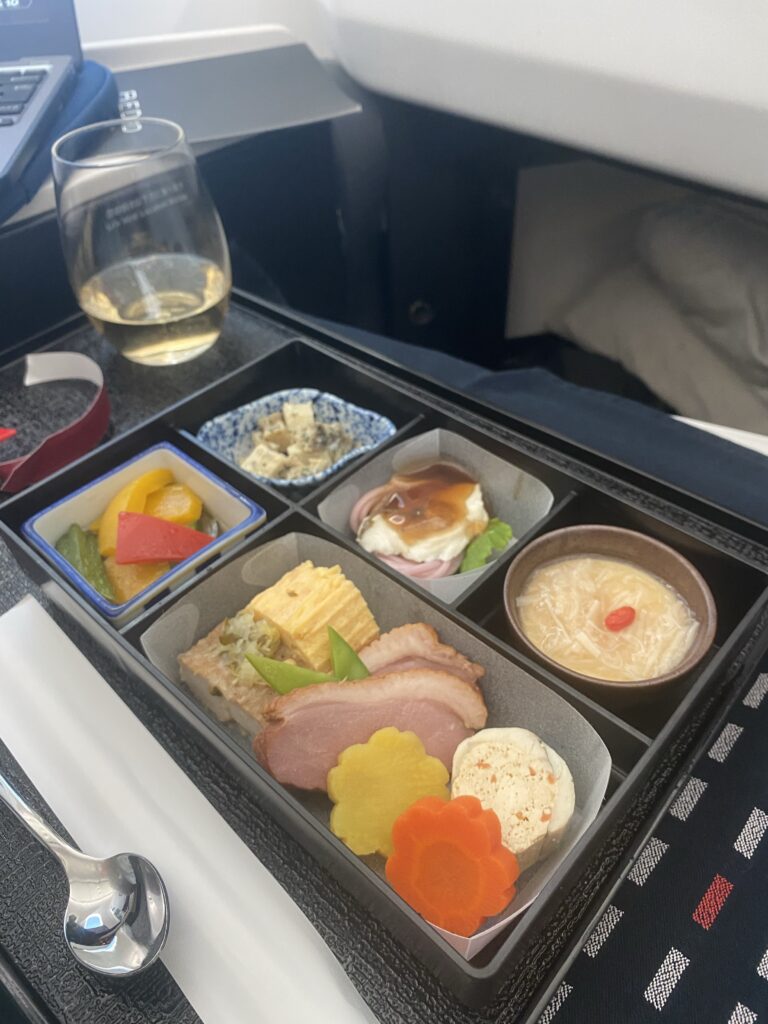
About six hours after take off, we landed uneventfully at Haneda and made our way to a “limousine bus” quickly. These buses are not fancy but they are efficient! Tickets can be purchased at the airport, and the friendly clerk provided us with full directions on where to board the bus and where to exit. At the bus stop, a porter assists with organizing the tickets and the luggage, which is transported in the luggage compartments. It was well-run and soon we were dropped off just steps from our hotel in Yokohama.

We decided to stay in Yokohama for a few reasons. First, it’s where the cruise departs from so eventually we would need to be there. Second, hotels were much cheaper than Tokyo. Going outside of Tokyo proper can cut your lodging bill in half! Third, the train system is very good so we were well connected to anywhere we wanted to go.
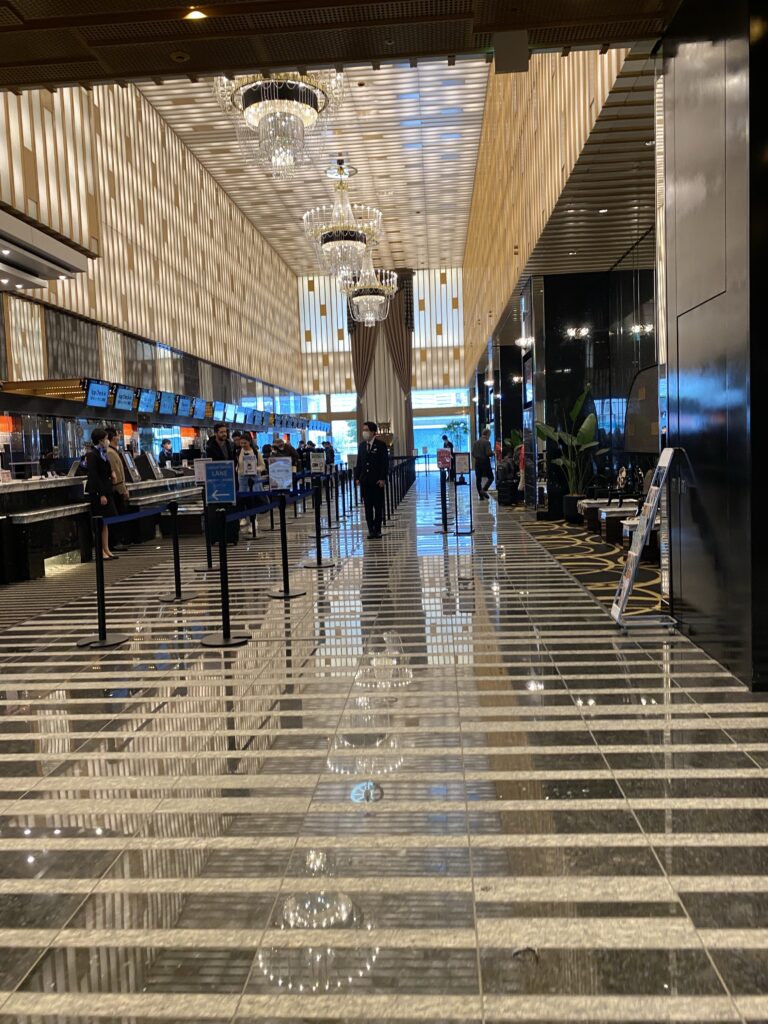
We stayed at an APA hotel. The hotel is large and the rooms are very small! With typical Japanese efficiency, there is a lot packed into that small room: room under the beds for luggage storage, a bathtub, fancy Japanese toilet, large flatscreen television, bathrobe/pajama sets (to wear in the complimentary spa), refrigerator and hot water kettle, and a wide variety of included toiletries. And the price was around $60 USD/night. We were impressed!
We stopped at Family Mart next door to pick up some snacks and drinks to keep in the room. We also picked up snacks to eat in the moment! I had some chicken tenders and Corey ate teriyaki chicken and some dumplings. There was also a selection of instant noodles that we could prepare in the room. It was all pretty good for a convenience store!
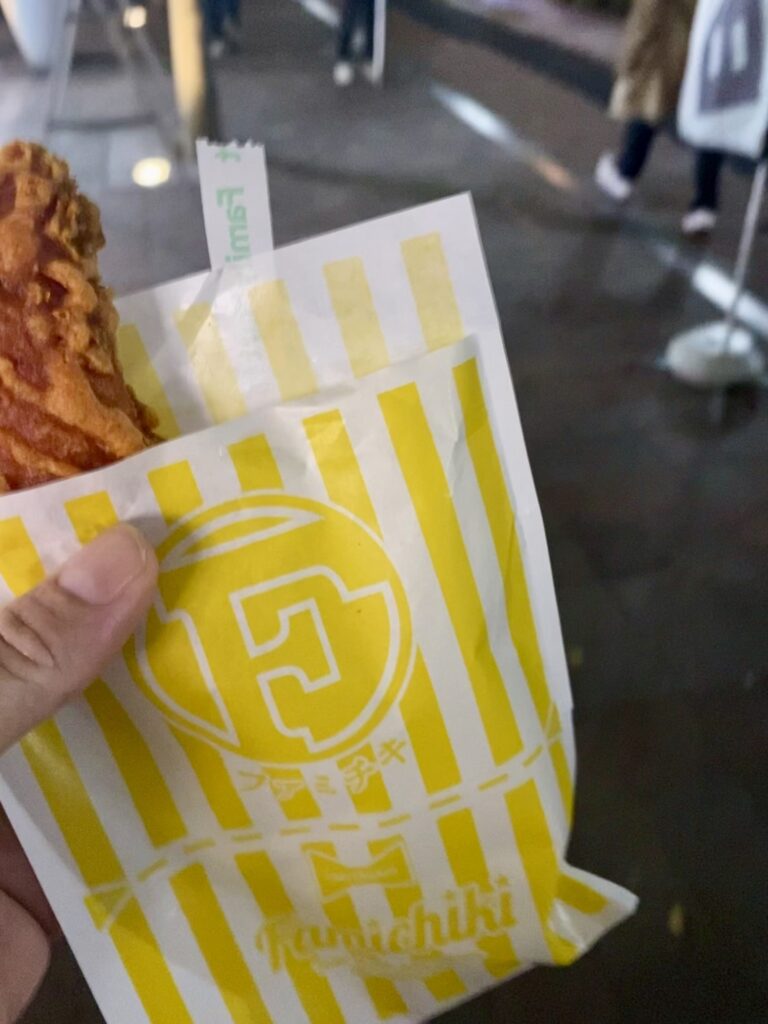
Day 1
We got a good night of sleep and headed out to Tokyo to explore. We had done a little research beforehand and picked out a handful of neighborhoods that we wanted to explore on foot. We decided to start in Shibuya.
Meiji Shrine
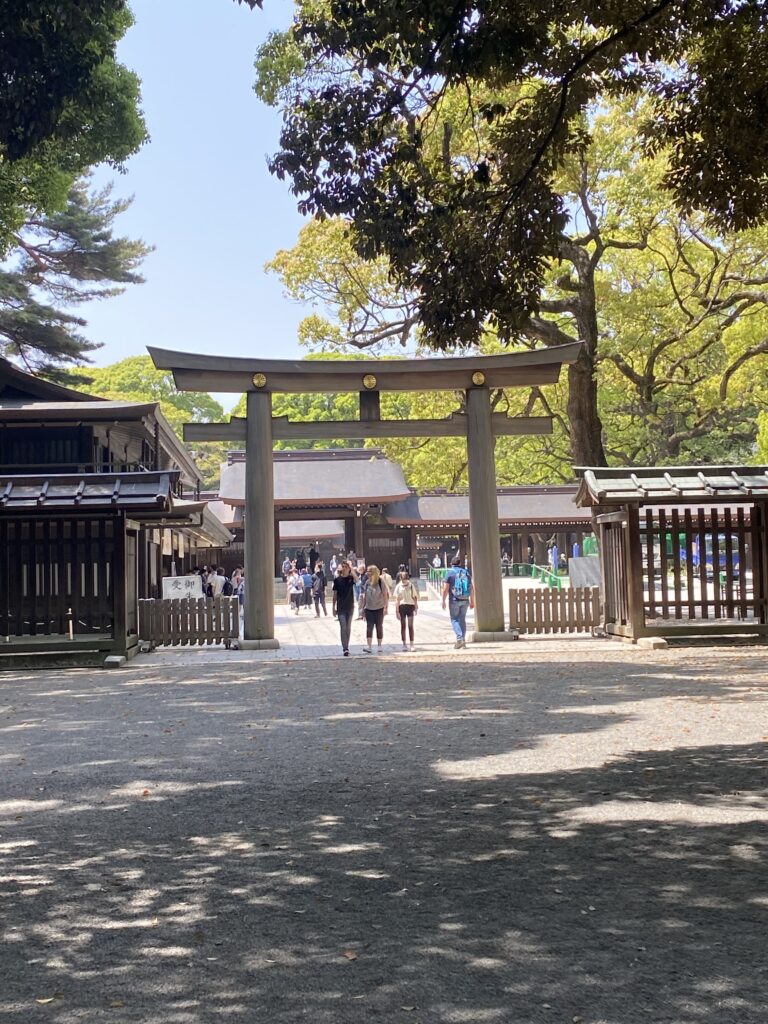
Specifically we walked through the vast forest park surrounding the Meiji Shrine, en route to the shrine itself. This area was built in the 1920’s in the years following the death of Emperor Meiji. The shrine building was destroyed during World War II and was then rebuilt in the 1950’s. It is a significant religious area with a large beautiful green space. No eating, running, or cycling is allowed.
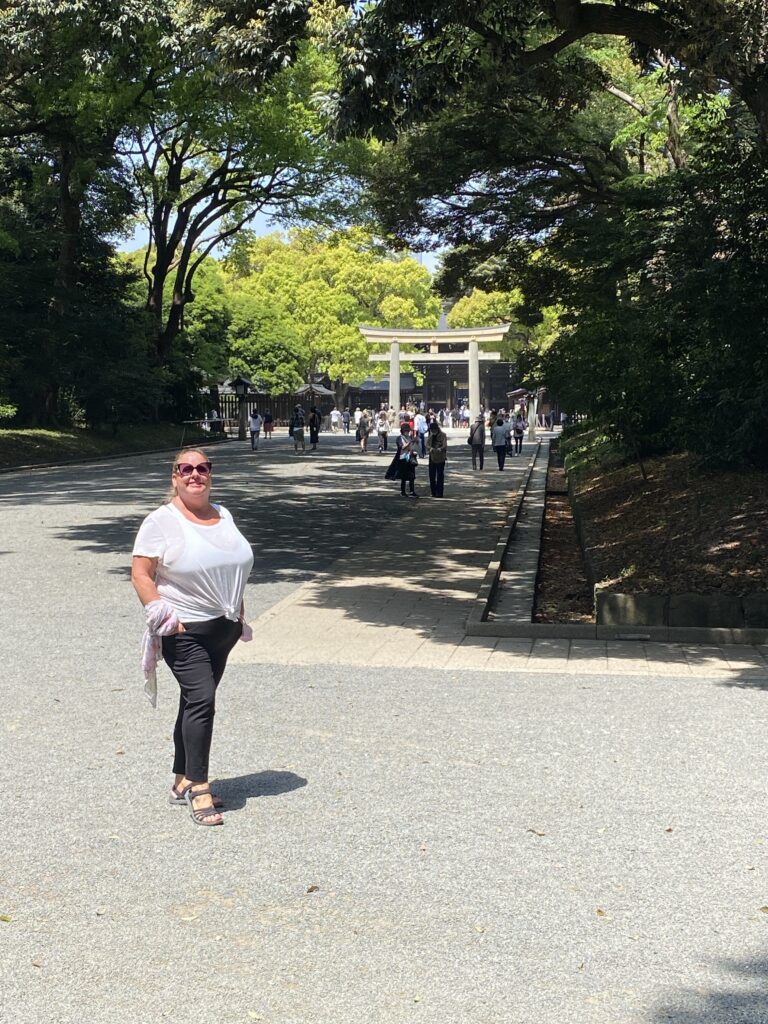
While touring we visited the historical gardens as well.
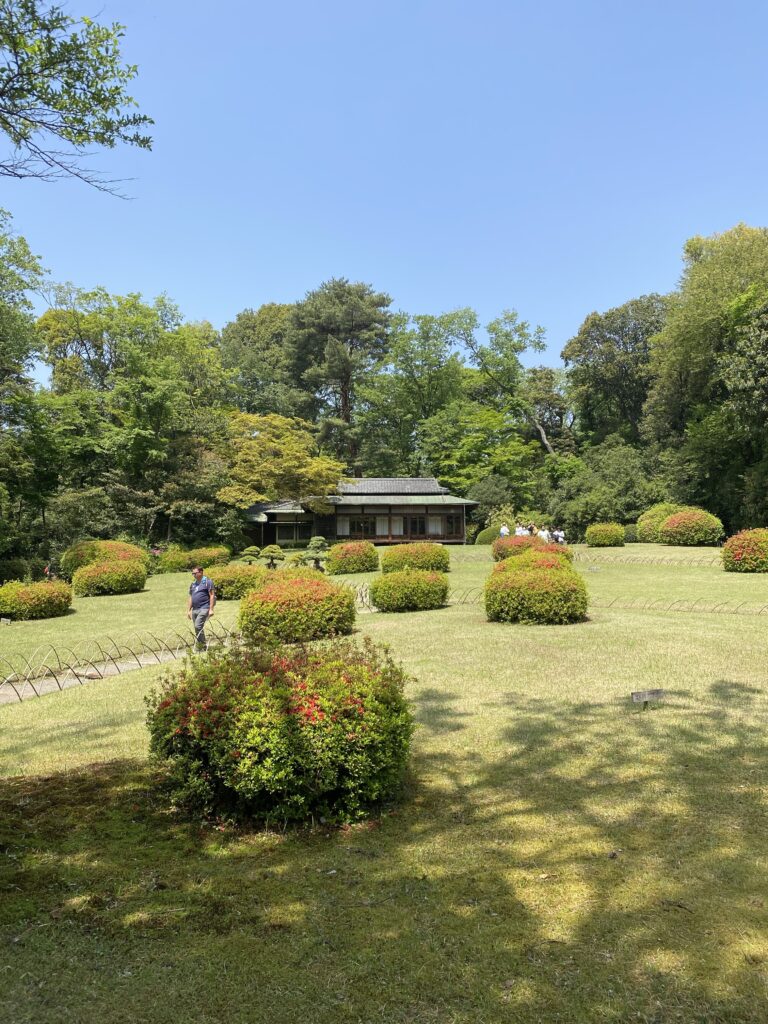
The garden predates the establishment of the shrine, and likely dates to the 1600’s. One of the highlights is Kiyomasa’s Well. The legend is that a spring was struck when the land was being excavated to construct a building. Hundreds of years later, the spring continues to flow freely. It’s not exciting in the photo but neat to see a well in use for so many years as an irrigation source for the gardens.
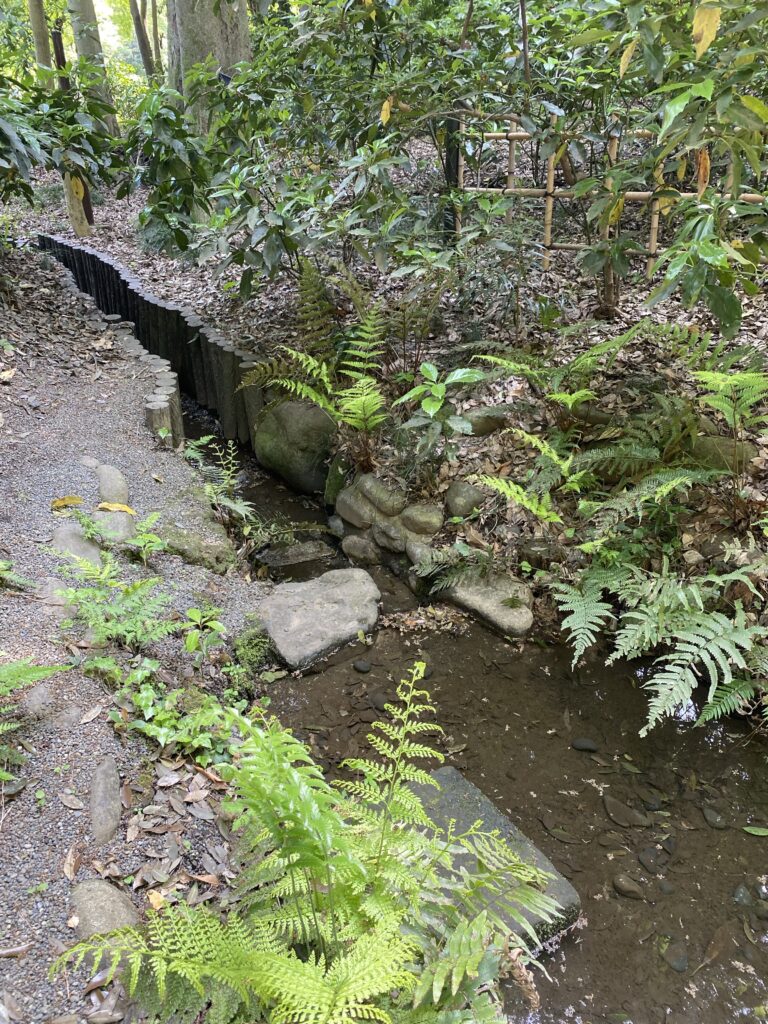
We chose to grab lunch at a cafe near one of the exits of the Meiji Shrine area. We split a Japanese beef curry and soba noodles. Both were delicious!
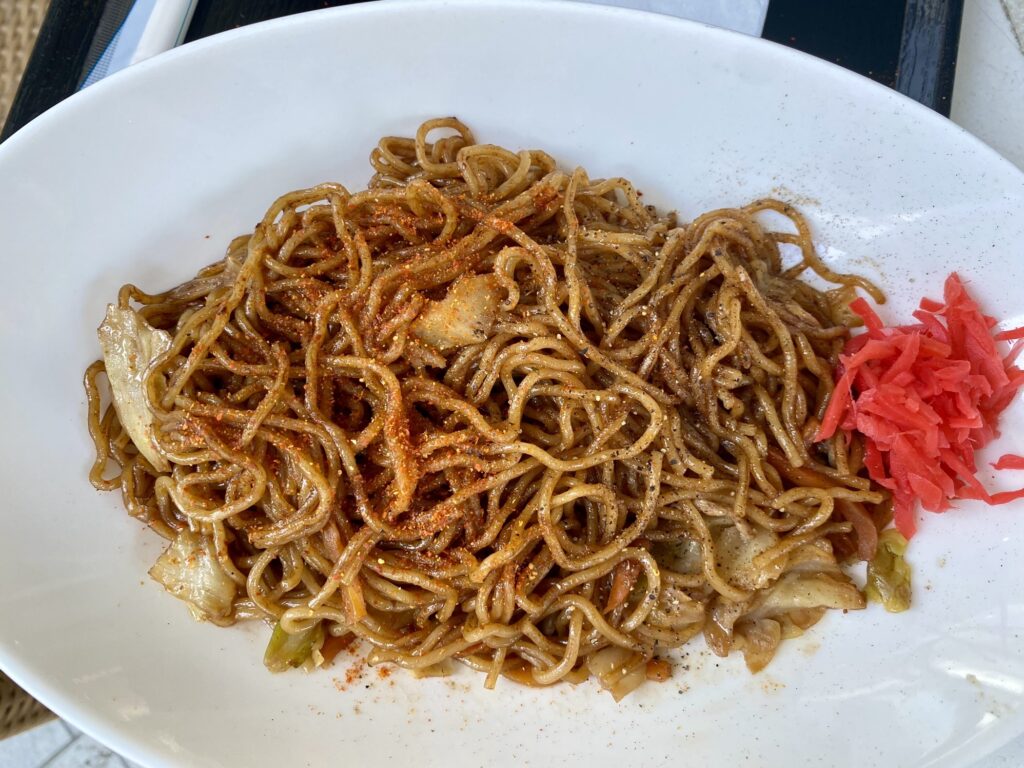
To walk off our lunch, we headed toward the busier Shibuya neighborhood.
Shibuya
We literally crisscrossed streets throughout taking both large and small avenues.
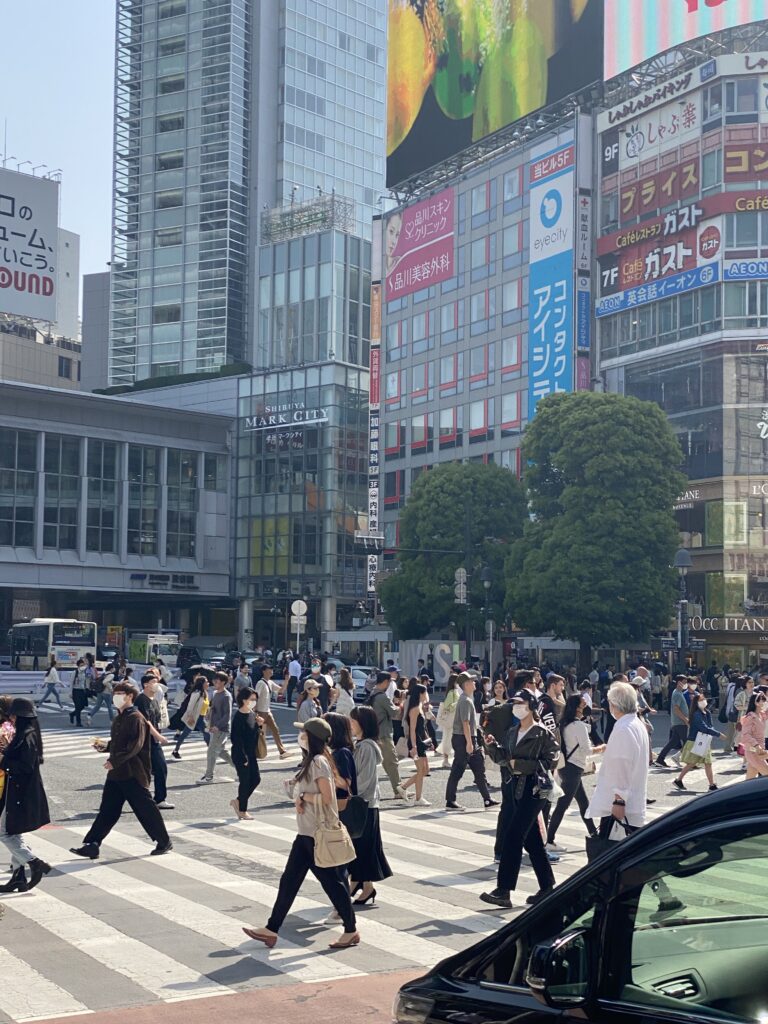
We also walked across the famous Shibuya Crossing in the afternoon. It was not as hectic as we had imagined but still fun to cross the large road with lots of other people. Video on YouTube. Actually all of our short videos from Japan are on a YouTube playlist.
We walked around the area more until we discovered an Aperol pop up! It was such a cute place with an outdoor sidewalk cafe vibe. At $3.50 USD, these were some of the least expensive spritzes we have seen in the world. We enjoyed spritz hour then carried on with our walk.
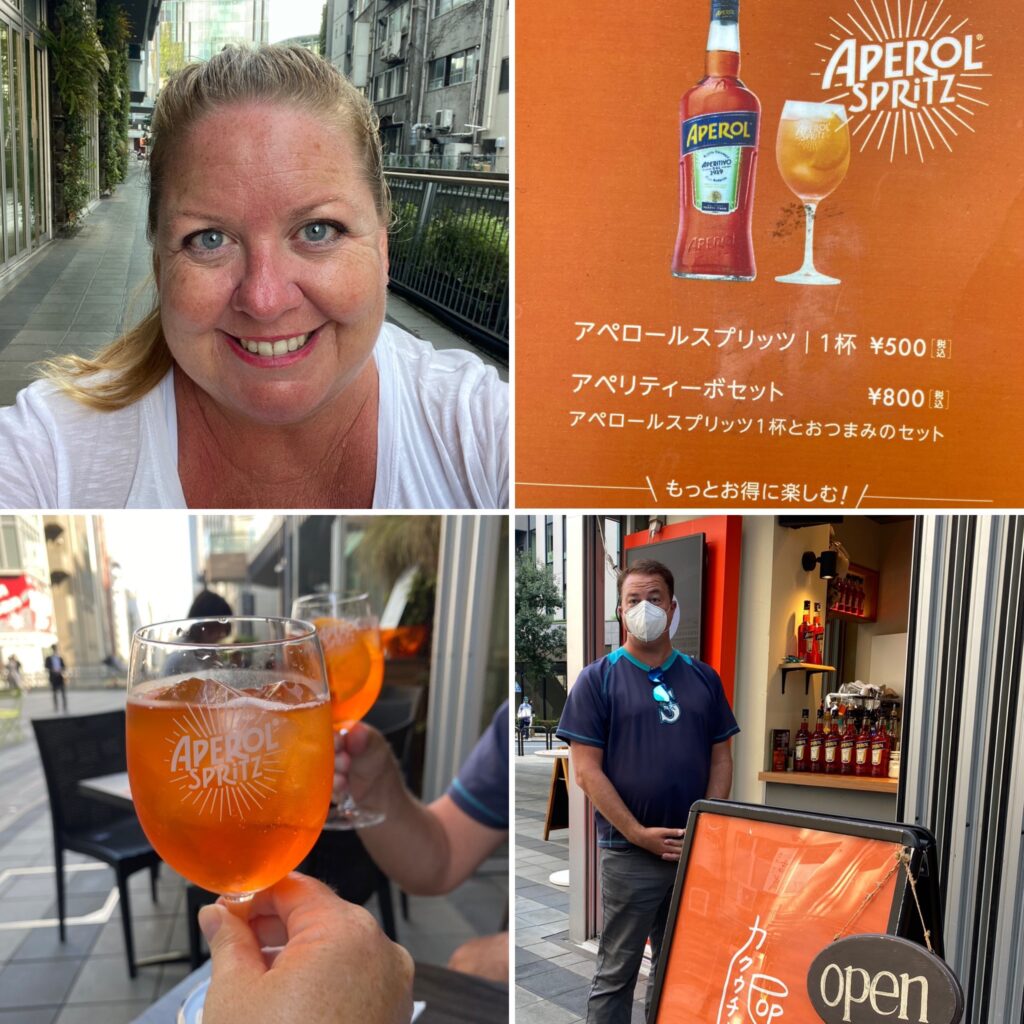
Meiji Jingu Stadium
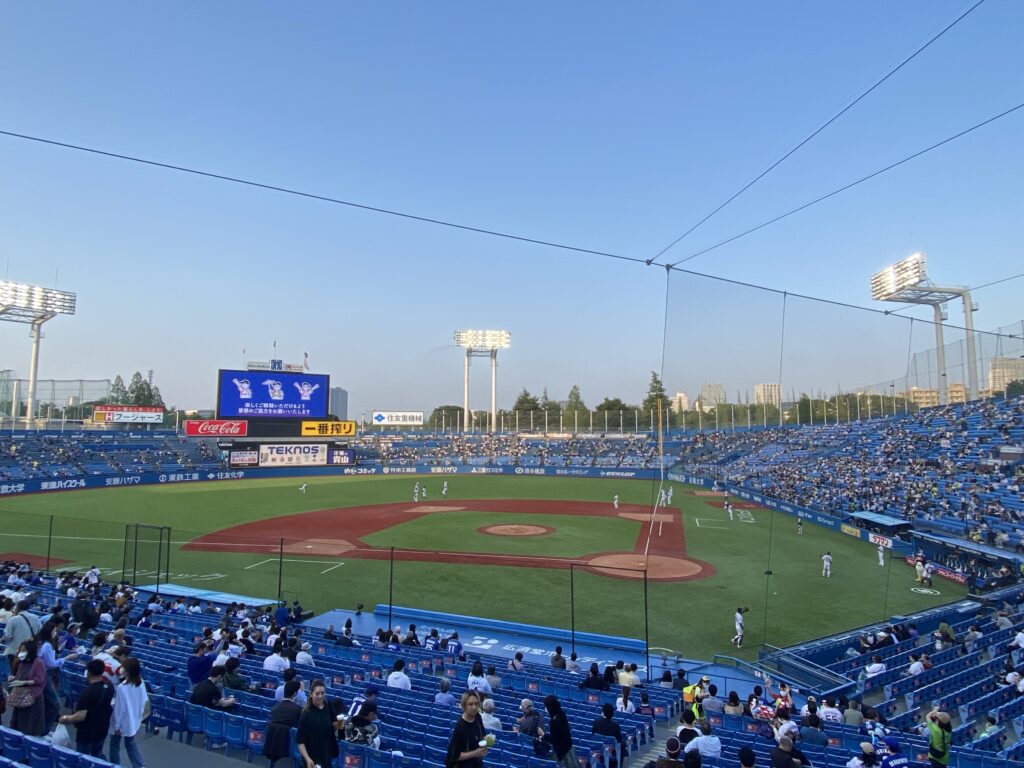
At this point in the afternoon we decided to walk toward Meiji Jingu Stadium to watch the Tokyo Swallows play baseball against the Nagoya Dragons. We had read that the process of buying baseball tickets online was difficult, but Corey was able to easily navigate the English-language version of the website and use a US credit card to buy tickets, which were easily picked up at will call at the stadium. We headed into the stadium about 30 minutes before the game.
This historic stadium dates back to 1926! Nearly a century old, it is one of the baseball stadiums that a United States team of all-stars (including Babe Ruth) toured through in 1934. The structure and vibe reminded Corey of Dodgers Stadium in Los Angeles, although that stadium opened decades later.
I thought there would be more to see at the stadium, but because of the age it was small and functional. There were a great variety of food vendors packed into the concourses and also in the stadium grounds but outside the concourses. A catalog of food options is provided on entry, and they appear to take pride in their unique ballpark fare.
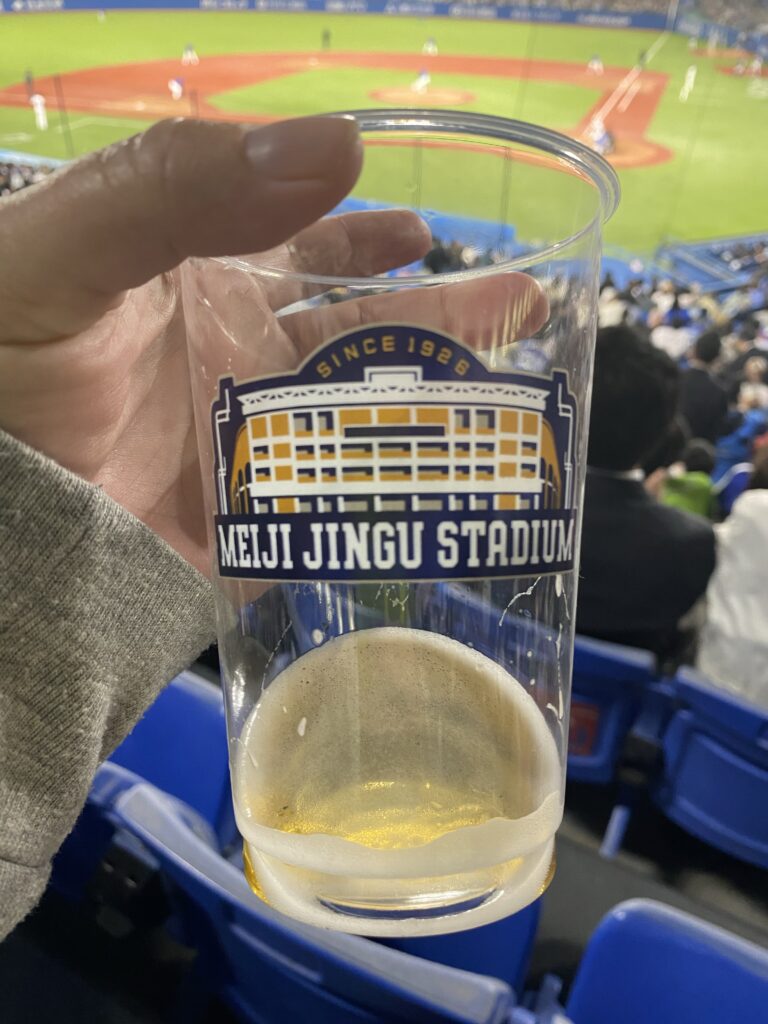
We could not figure out where our seats were but we found them after getting some assistance. Once we got comfy we flagged down one of the many beer girls, who literally run around with kegs of beer strapped to their backs!
The game was fun and included announcements in English and Japanese. Even some of the chants were in English. “Go, go Swallows!”
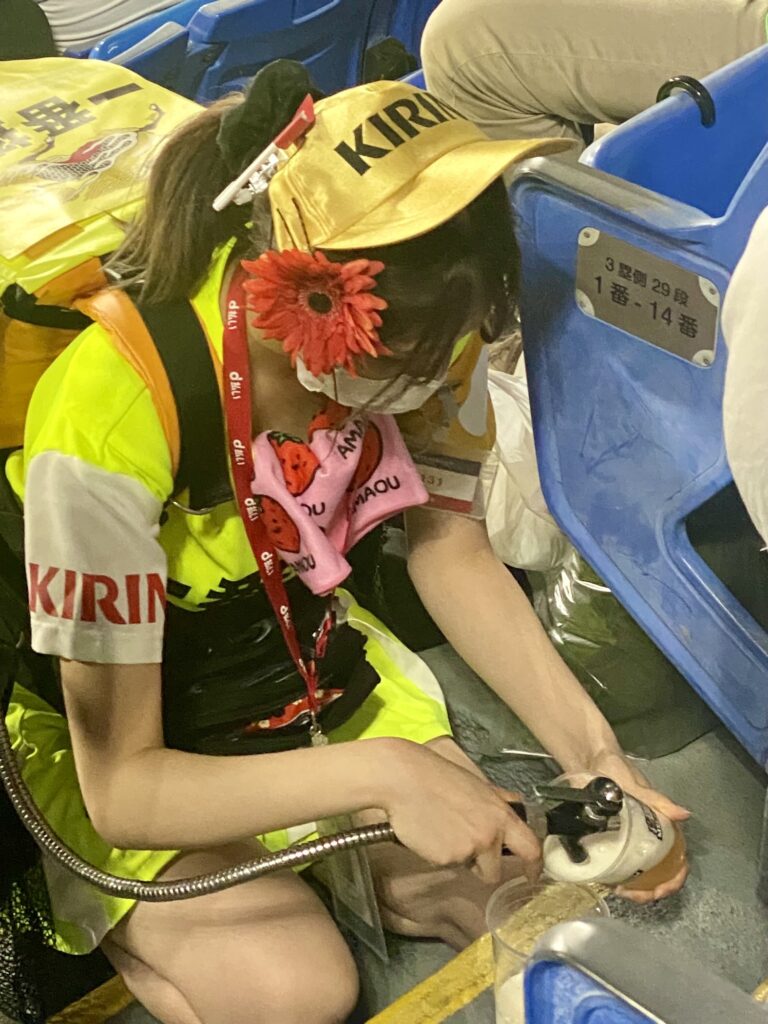
We stayed until the middle of the 8th inning. We’re not usually those kind of people that leave early but we wanted to avoid the crowds back to the train station, and we had a super duper early morning start the following day.
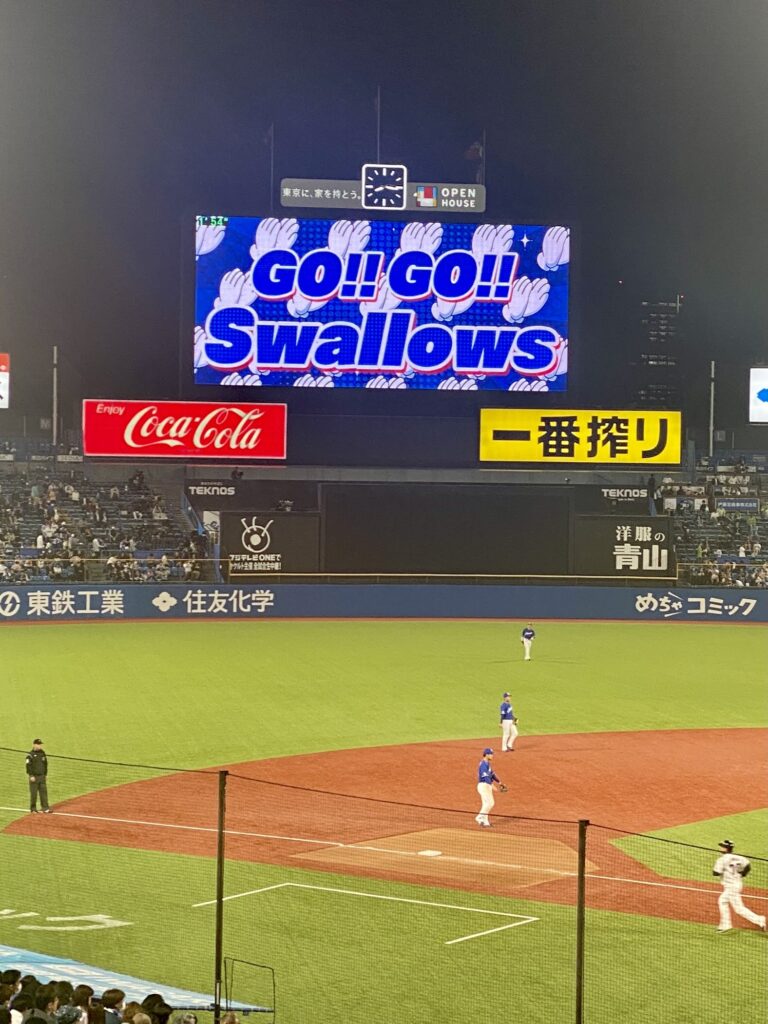
It was a successful day of sightseeing and we clocked in eight miles of walking!
Day 2
Our first day beating pavement in Tokyo was just a warm up. We set the alarm early and hopped on a train by 6:30 AM in order to make it to Tokyo DisneySea by rope drop.
Tokyo DisneySea
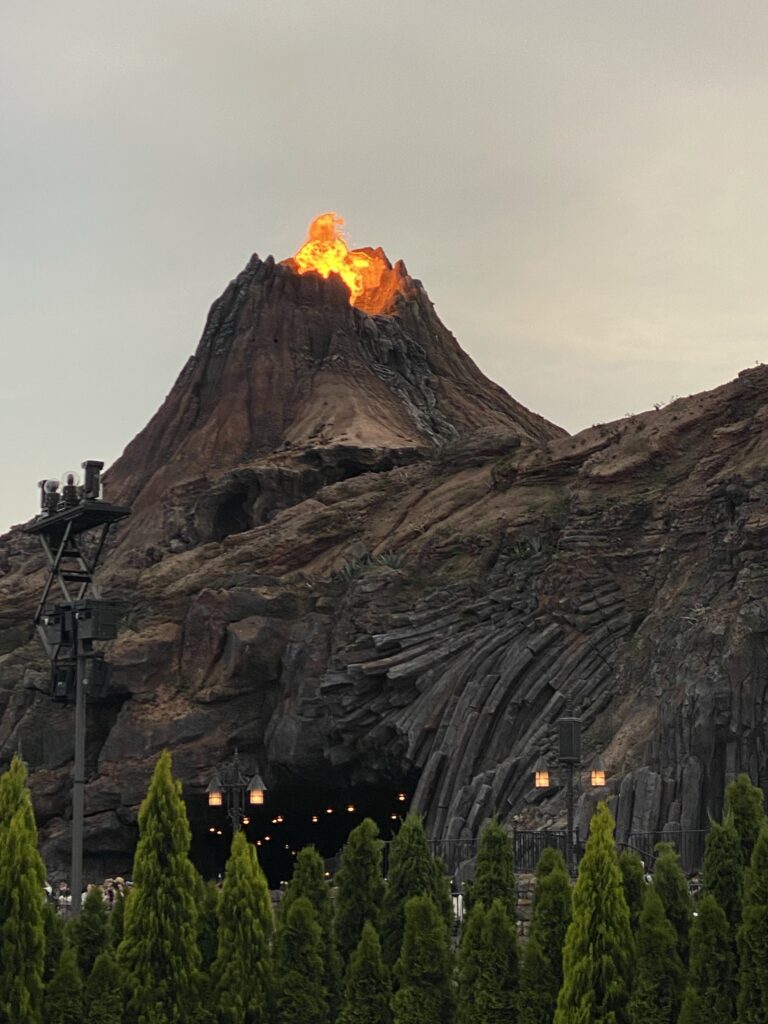
TL;DR: We had a stellar day at Disney and ended up walking a whopping 11.5 miles!
We arrived at the train station near Disney a few minutes past 8 AM which meant we were a couple minutes late to meet our Disney companions. No, not Mickey & Minnie… Kal and Mary.
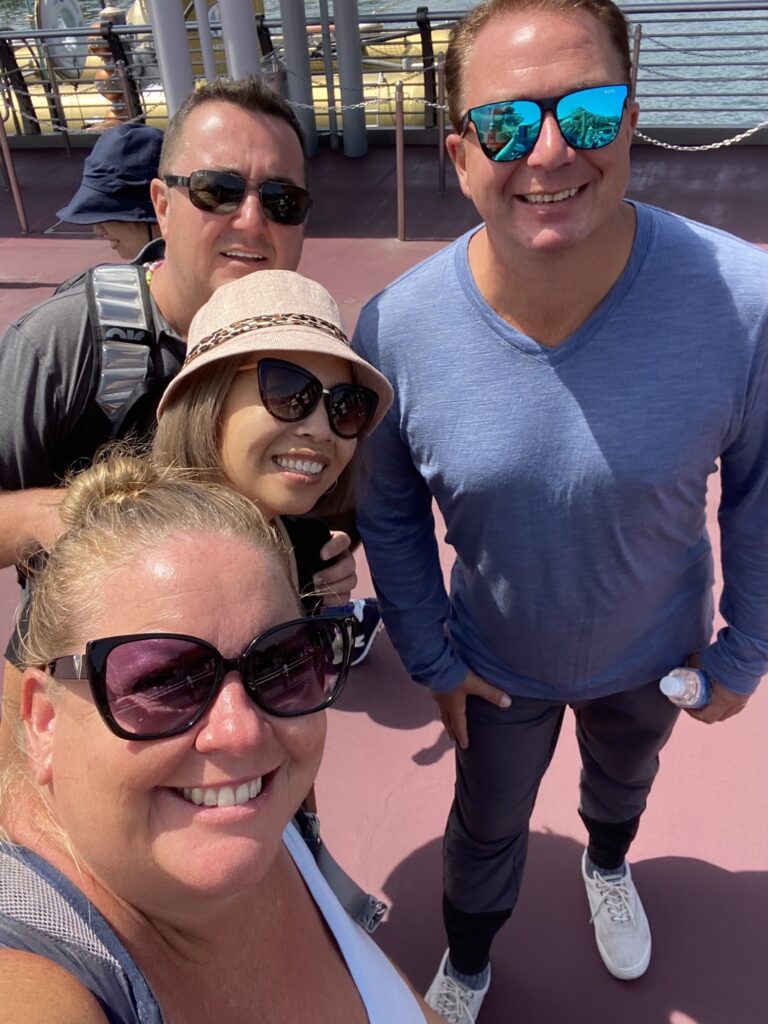
Kal and Mary are friendly Canadians that were booked on the same repo cruise from Tokyo to Seattle. They travel a lot and spent many months in Thailand over the past year. We met them through Go With Less, an incredible Facebook group community. It’s a group of travelers that share stories and tips related to nomadic life and getting the best travel experience on a limited budget. We’ve mentioned this group in other posts, too.
We all walked to the front entrance and made it into the park a few minutes after rope drop. It was so strange walking into a “brand new to me” Disney park. I should have planned the walking routes better considering I had an itinerary for the day. But I had done a fair amount of online research and found this blog helpful for planning the day and understanding what to expect.
What exactly is DisneySea?
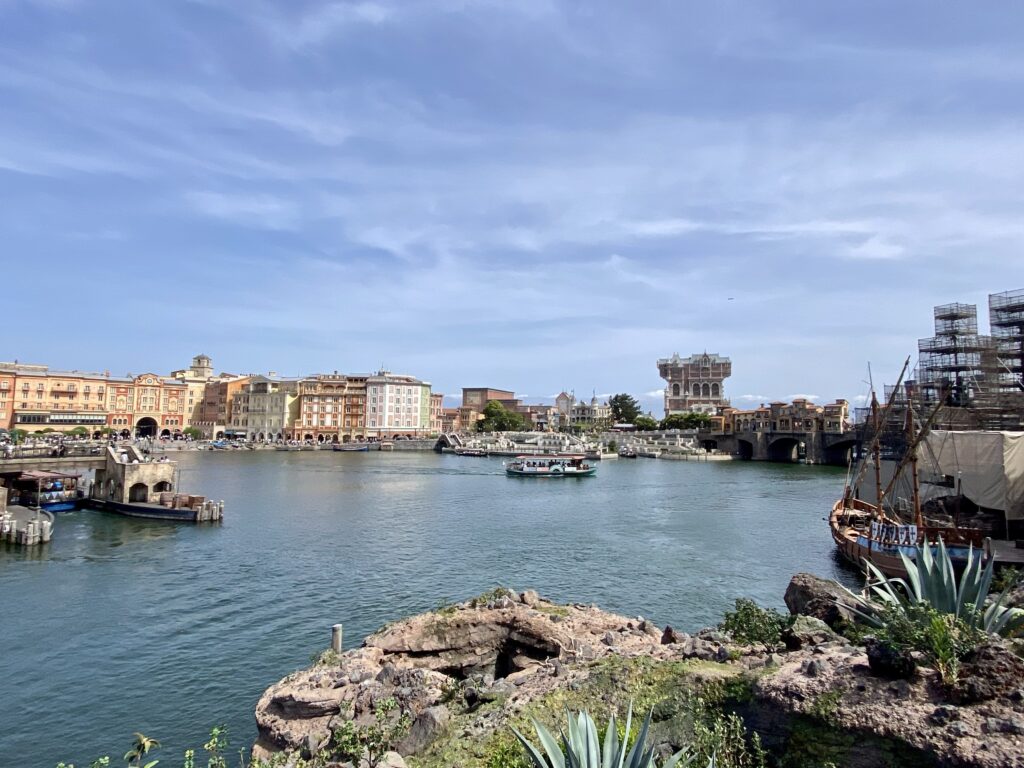
Like Disneyland / California Adventure in California, there are two parks at the Tokyo complex, DisneySea and Tokyo Disneyland. For all the Disney fan(atics) reading this, DisneySea is like a cross between California Adventure and EPCOT Center. The main park feature is a lake and a mountain with different nautical-themed lands: Mediterranean Harbor (a combo of Venice and Portofino), American Waterfront (Eastern Seaboard), Lost River Delta, Port Discovery, Mermaid Lagoon (Little Mermaid-themed), Arabian Coast (Alladin-themed), and Mysterious Island (located underneath the volcano).
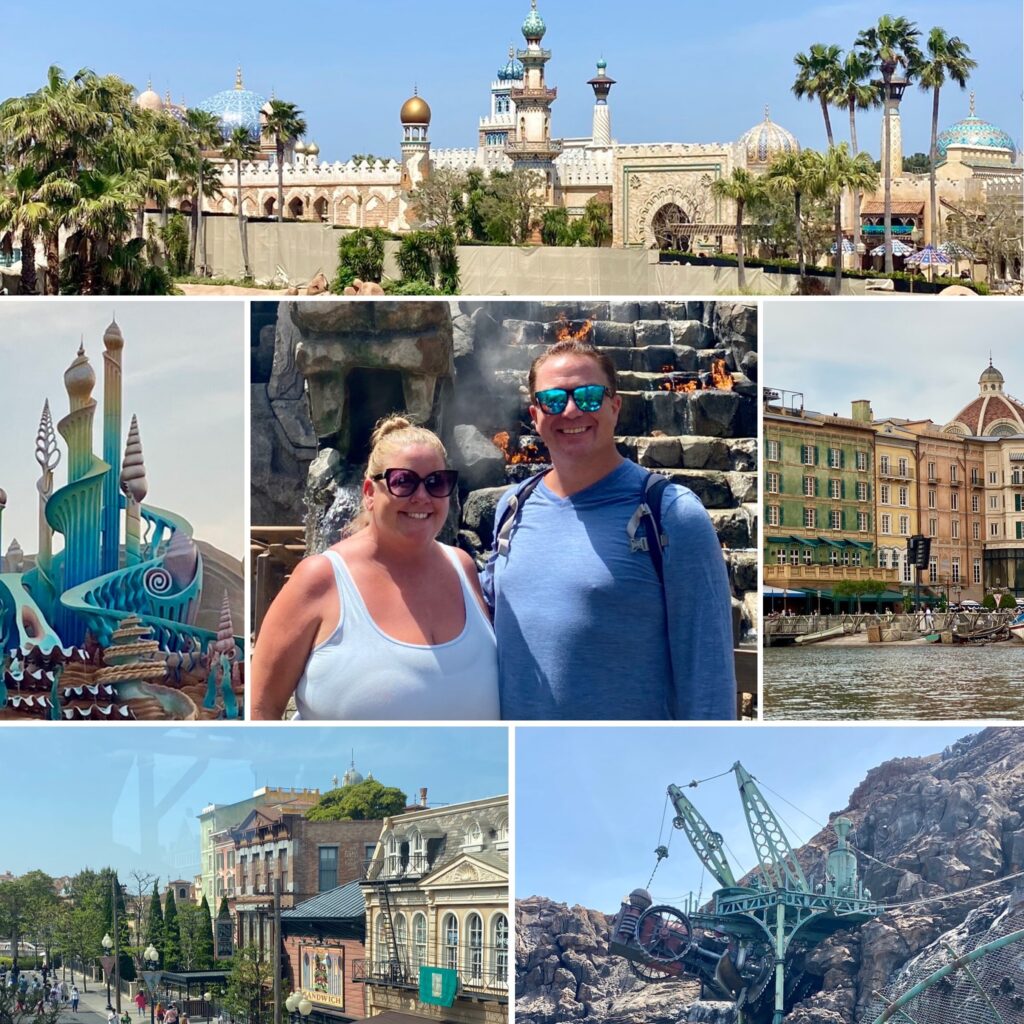
Some rides are exclusive to the park and some are versions already at other Disney parks. Here are a few of our favorite rides:
Exclusive:
- Journey to the Center of the Earth
- Sindbad’s Storybook Voyage
- Aquatopia (magnetic boats)
- Venetian Gondolas
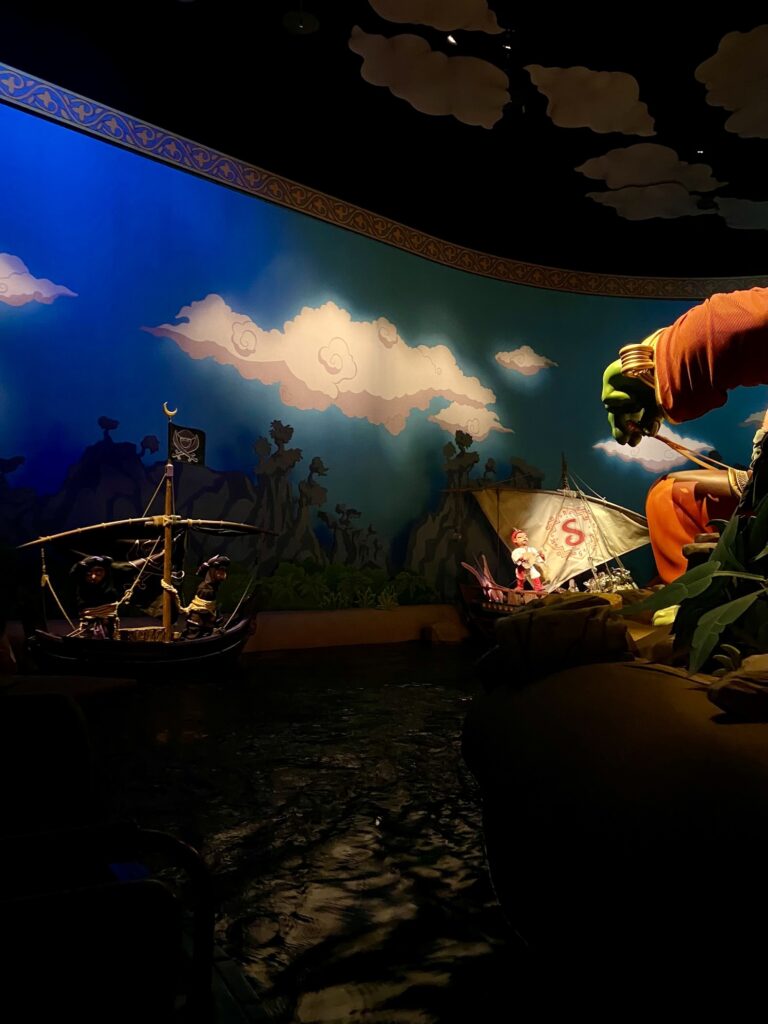
Similar:
- Jasmine’s Flying Carpets (similar to the other flying carpet rides)
- Indiana Jones (but in Japanese)
- Tower of Terror (with an original storyline, and in Japanese)
- Soaring: Fantastic Flight
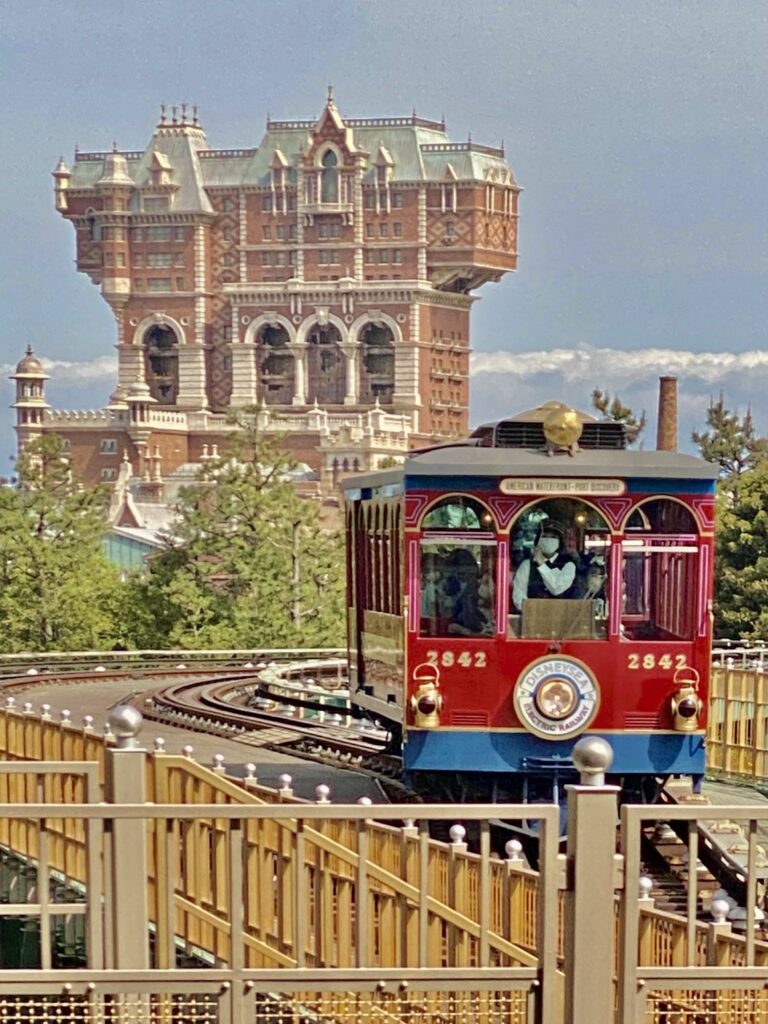
Back to our day at the park!
We enjoyed almost a full day at the park including multiple rides on Indiana Jones, and also the Raging Spirits roller coaster next to it. We crisscrossed through the park several times and only missed one ride on our list. The Transit Steamer Line boats shuttle passengers around the lake. We wanted to take a round on the boats but we were about five minutes too late. There is a nightly show on the lake and the park stops running the steamboats early to prepare the show.
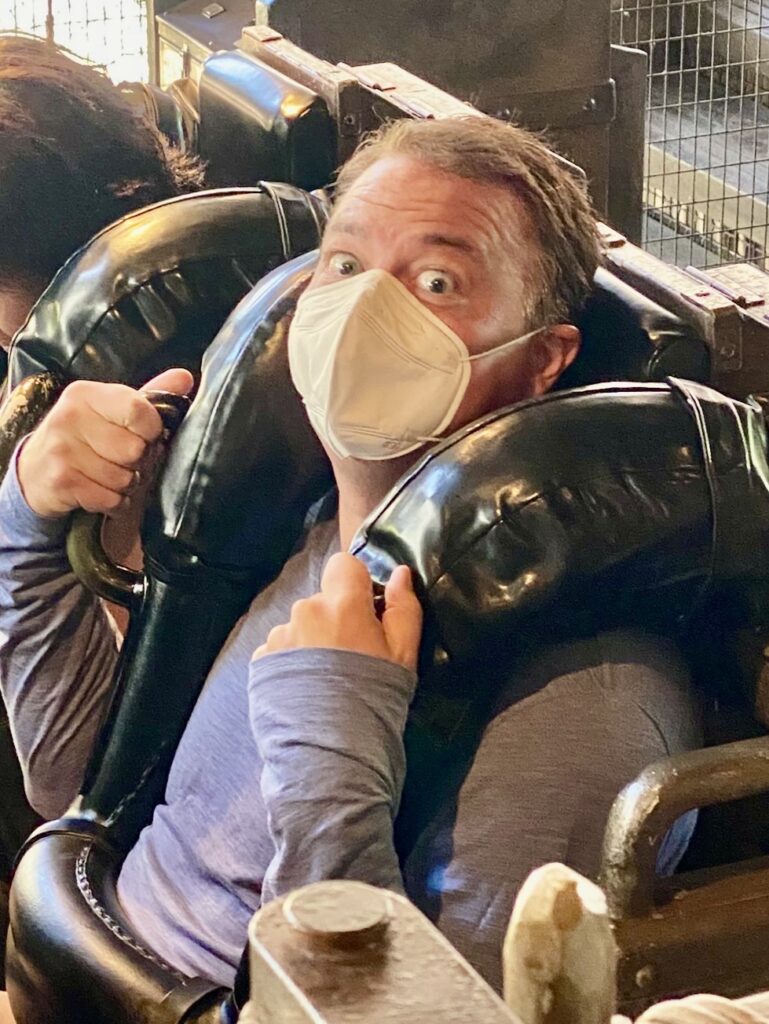
The Soaring ride had a two-hour wait all day, so we decided to go 10 minutes before the start of the big evening show on the lake. It worked to our advantage, as our wait was less than 45 minutes!
We exited that ride and decided to exit the park as well. Our friends had left in the afternoon. Instead of walking past Tokyo Disneyland and taking a train back, we grabbed a shuttle bus from the DisneySea bus terminal, very close to the park’s exit. It was so convenient! They offer buses to destinations all over the greater Tokyo area, and ours dropped us off at the main subway station in Yokohama.
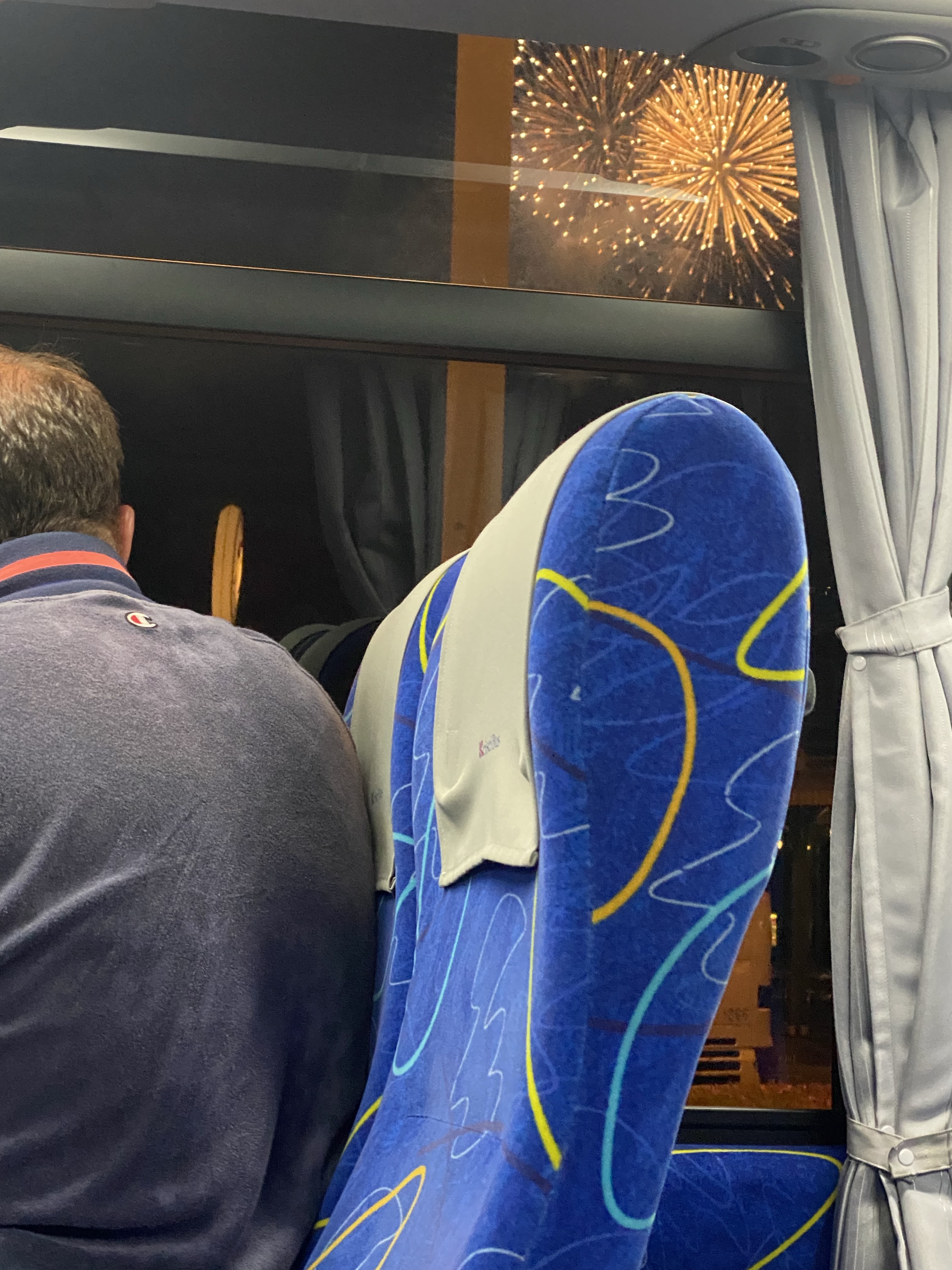
Meals at the Park
Disney parks around the world allow guests to bring snacks, and we brought in some Japanese treats. But we also ate lunch and dinner at the park and stopped for snacks, too.
Lunch was a hefty plate of curry (more Japanese-style) at Kasbah Food Court at the Arabian Coast. We snacked on churros and ice cream sandwiches. And for dinner we feasted on pizza and pasta at Zambini Brothers at Mediterranean Harbor,. Can you guess how much we spent for a full day of eating for two at Disney? $50 USD! Not bad right?
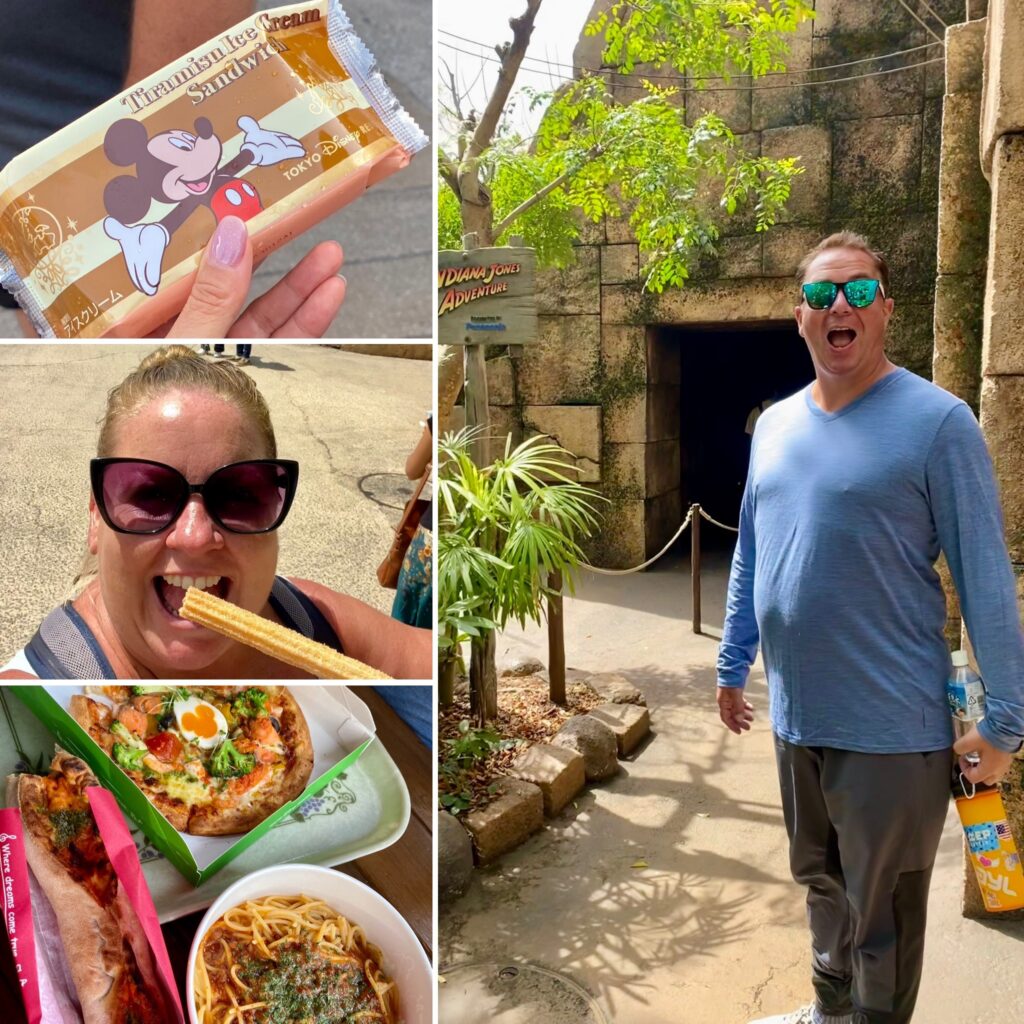
Overall thoughts on Disney in Tokyo
Go! You should seriously visit! The park was clean, easy to get to on public transit and there are hotels nearby as well. Many signs and rides were in Japanese and English.
More importantly, it was far cheaper than Disney in America.
The entrance fee for DisneySea was $59 USD/adult.
If the flight prices line up, consider a trip across the Pacific instead of going to Florida. You will save on entrance fees, food and drink, and lodging.
Also the toilets were all clean and they all had bidets!
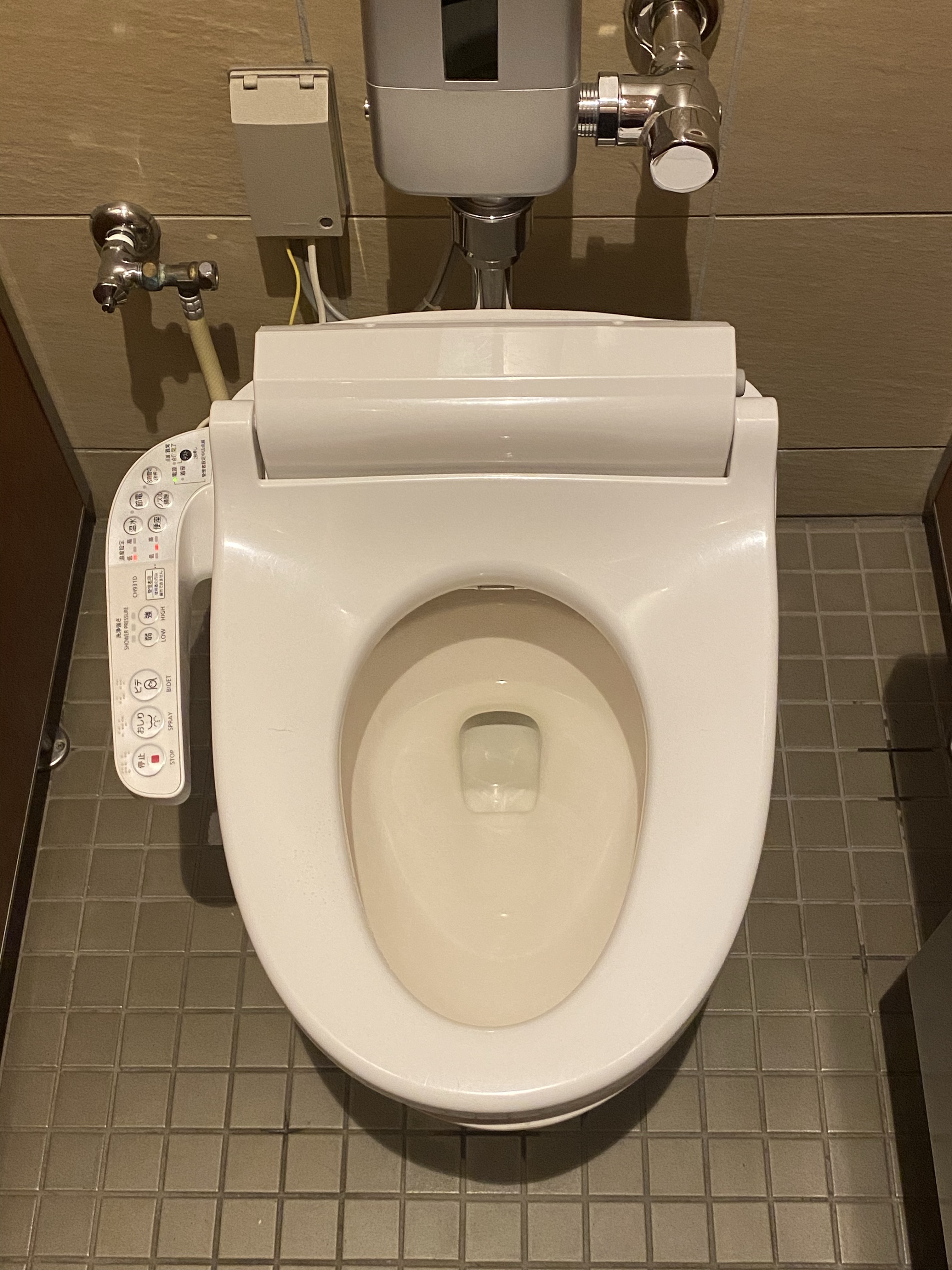
Day 3
After two long days and many miles on our feet, we slept in late and relaxed in the morning.
Asakusa Neighborhood
We left for Tokyo in the afternoon and headed far across the city again to visit the Senso-ji Temple and Asakusa Shrine plus the famous shopping streets in that area.
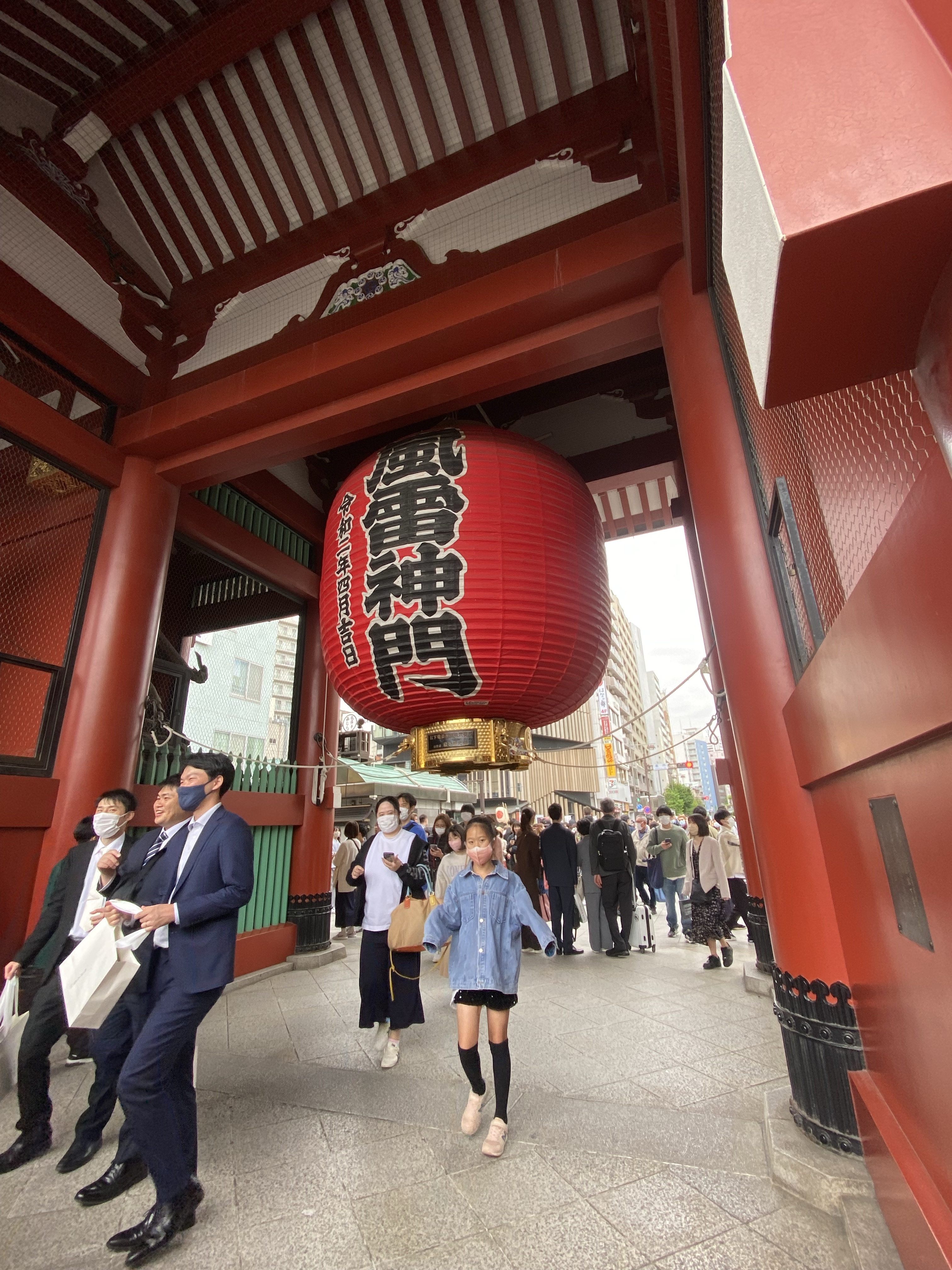
We were quite hungry since we had skipped breakfast, so we walked some of the neighborhood but were really scoping out food options. The good food places had long lines so we kept walking. We found ourselves on Hoppy Street, a road with dozens of izakaya taverns, but had a hard time getting a table. Some establishments had signs on the door that stated only people who speak Japanese can dine there. Other places had open tables on the patio but they were “reserved”. And yet another place also had open tables on the patio but the table was for four and we were two. Never mind that there was already another party of two sitting at a four-top. I was feeling frustrated, deflated, and hungry. This kind of treatment was familiar. There were times when I lived in South Korea where foreigners were sometimes excluded. Taxis would roll past you when tried to hail them or when you tried to buy something you would get a flat “no”. Even though quite different, Japan does remind me of the three years that I lived in Korea. There’s a fondness in my heart from that experience and sometimes a salty memory or two from foreigner-phobic interactions.

Anyway… we found a great spot for lunch around the corner from “Disappointment Alley”.
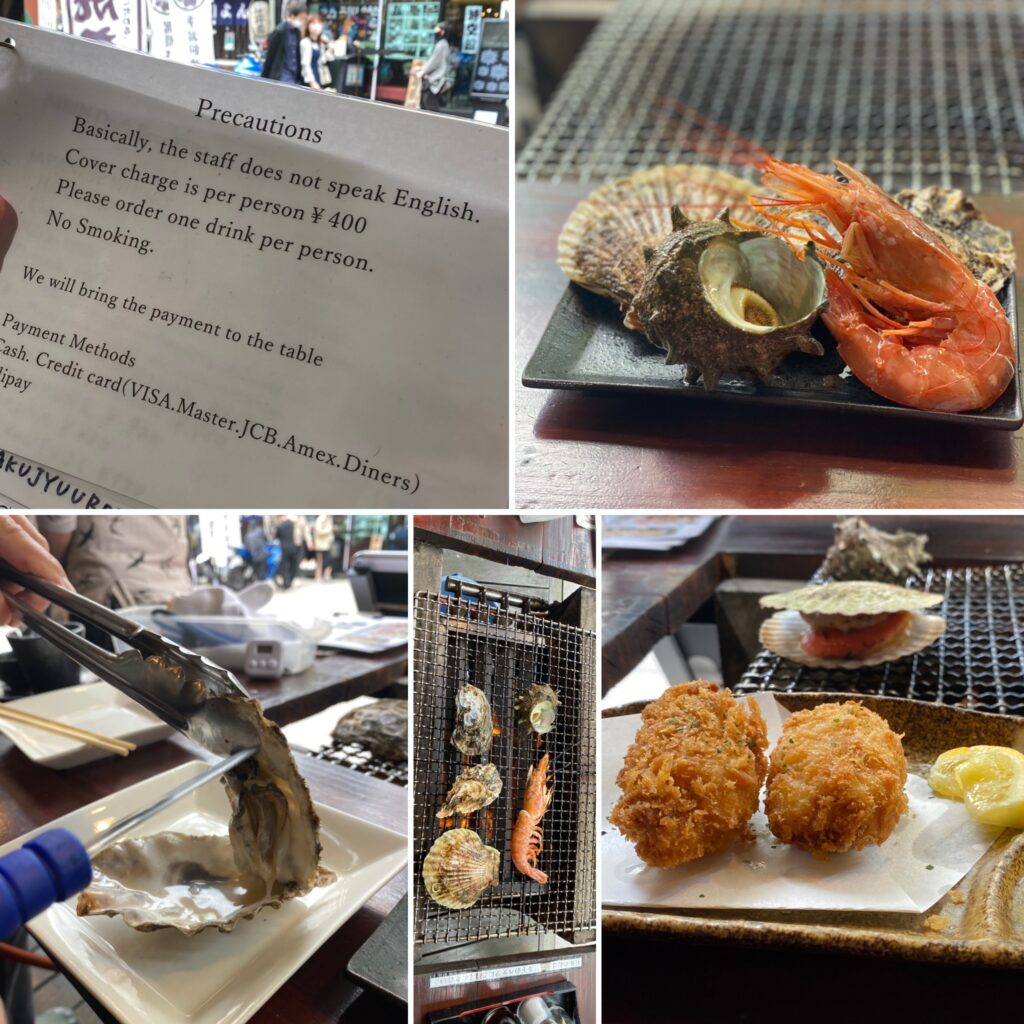
It was a tiny seafood restaurant with a hot fire table right outside. We grilled our own seafood and kept our hands warm at the same time! The service was exceptional and they provided a very clear English menu. While enjoying the fire we tried a few different Japanese whiskeys. The air was chilly so a little extra warmth was welcome.
Then we walked around the Asakusa neighborhood more. We explored the shrine grounds and the various temple buildings. In the neighborhood’s narrow walking alleys there were cute shops and handicrafts to peruse.
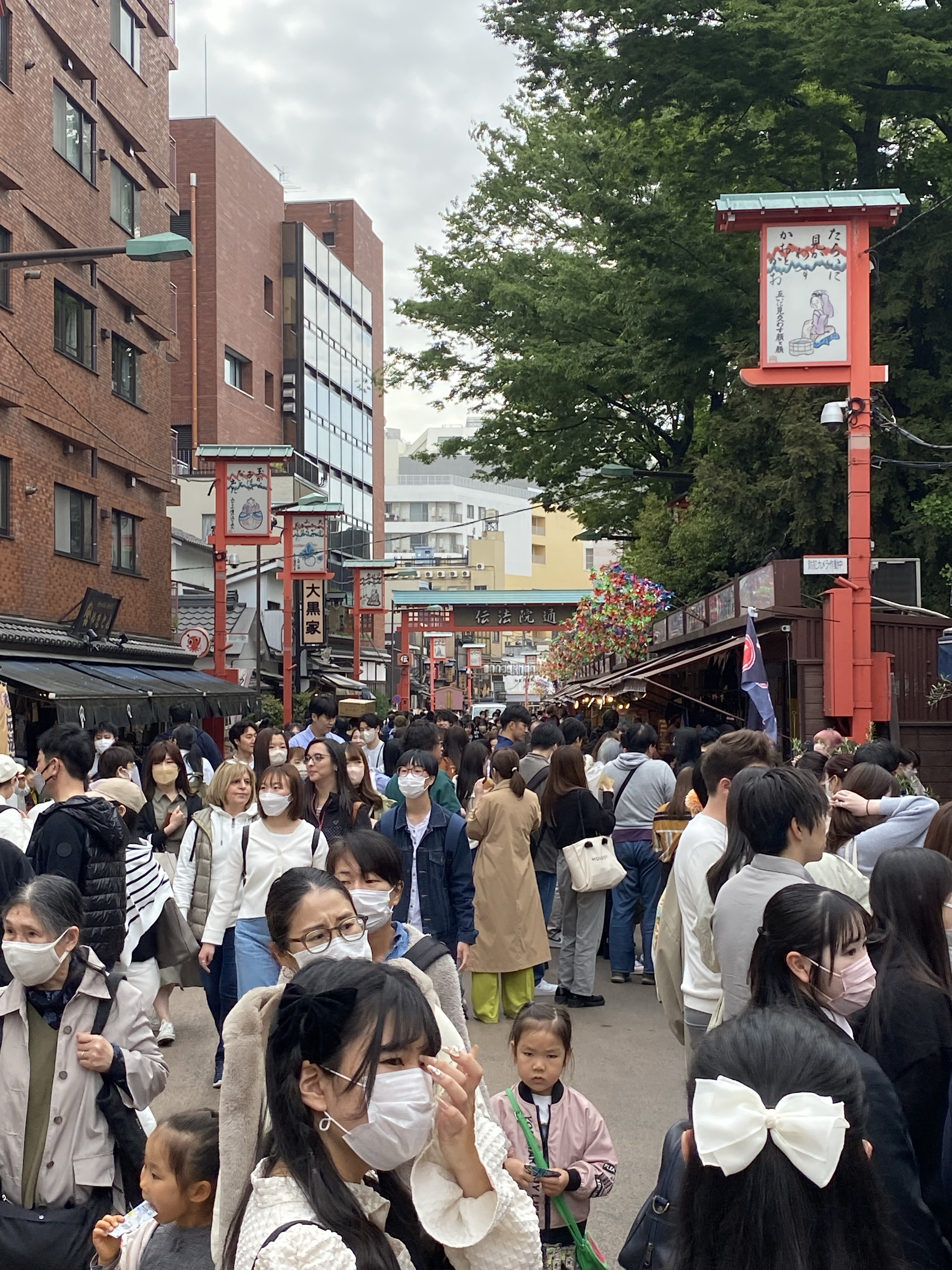
We then walked a mile west to the Ueno neighborhood, which afforded us the opportunity to see a more authentic version of Tokyo outside of the tourist crowds.
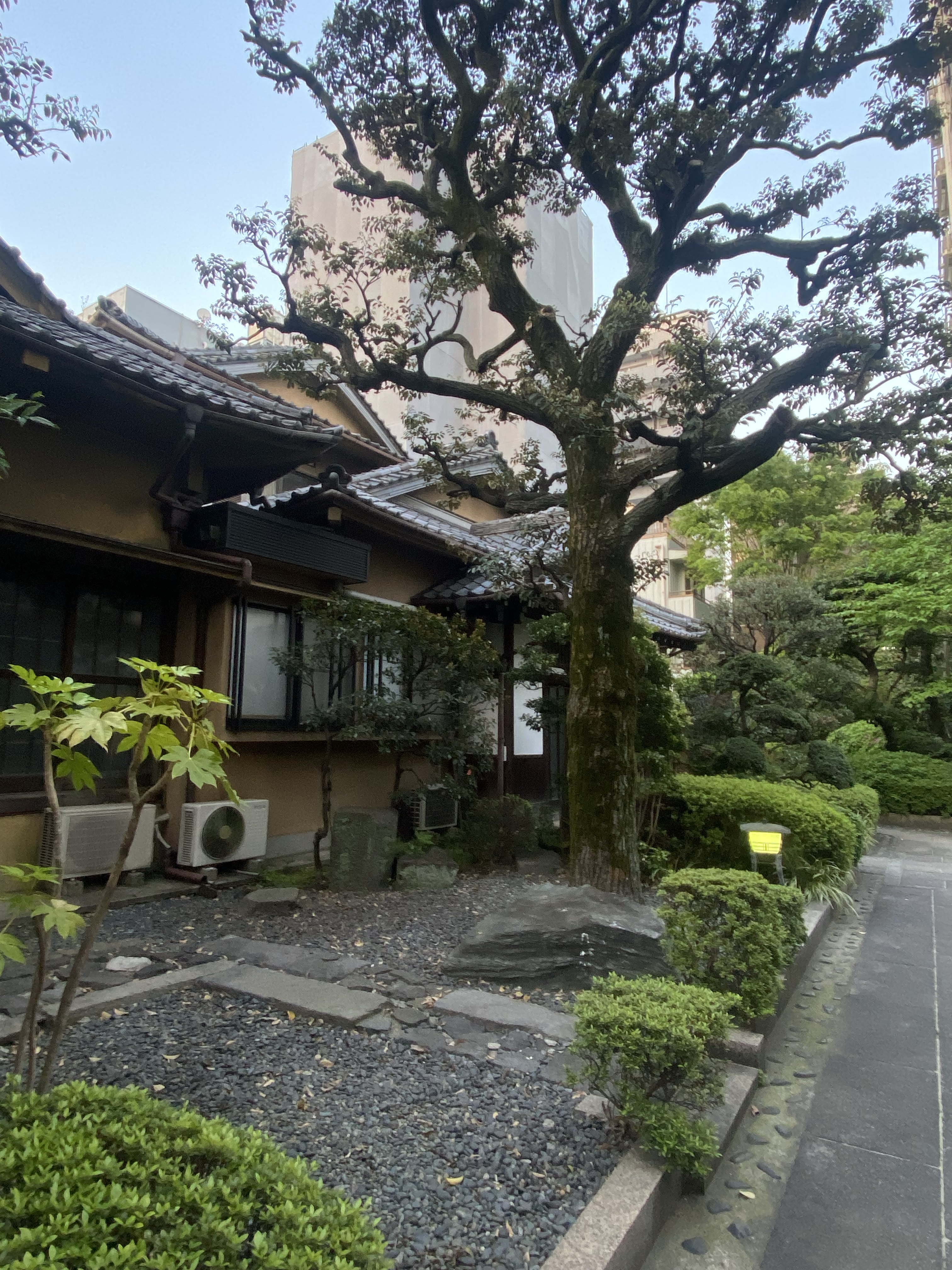
The streets were quiet, the houses small, and we visited a few neighborhood shrines along the way. We spotted a craft beer bar and shared a pint as we walked. Drinking on the street is legal in Japan (as it should be in a civilized society)!
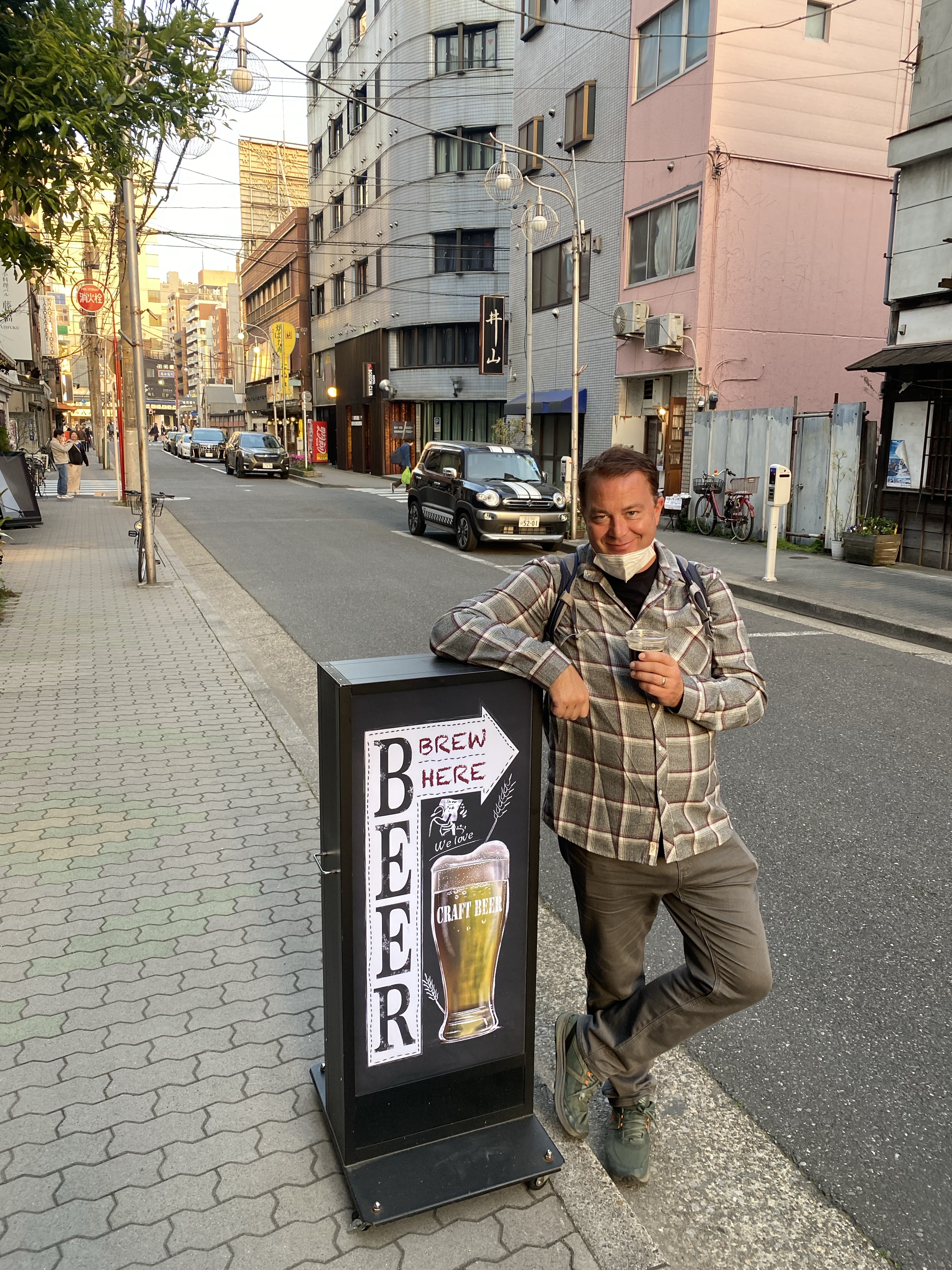
Eventually the neon appeared brightly before us and throngs of people began to gather as we approached our next destination.
Ueno
We wandered down the streets and took in the scene. There were cafes, bars, shops, restaurants, and businesses on many levels of the buildings and it was a bit overwhelming. So much to see in such little time!
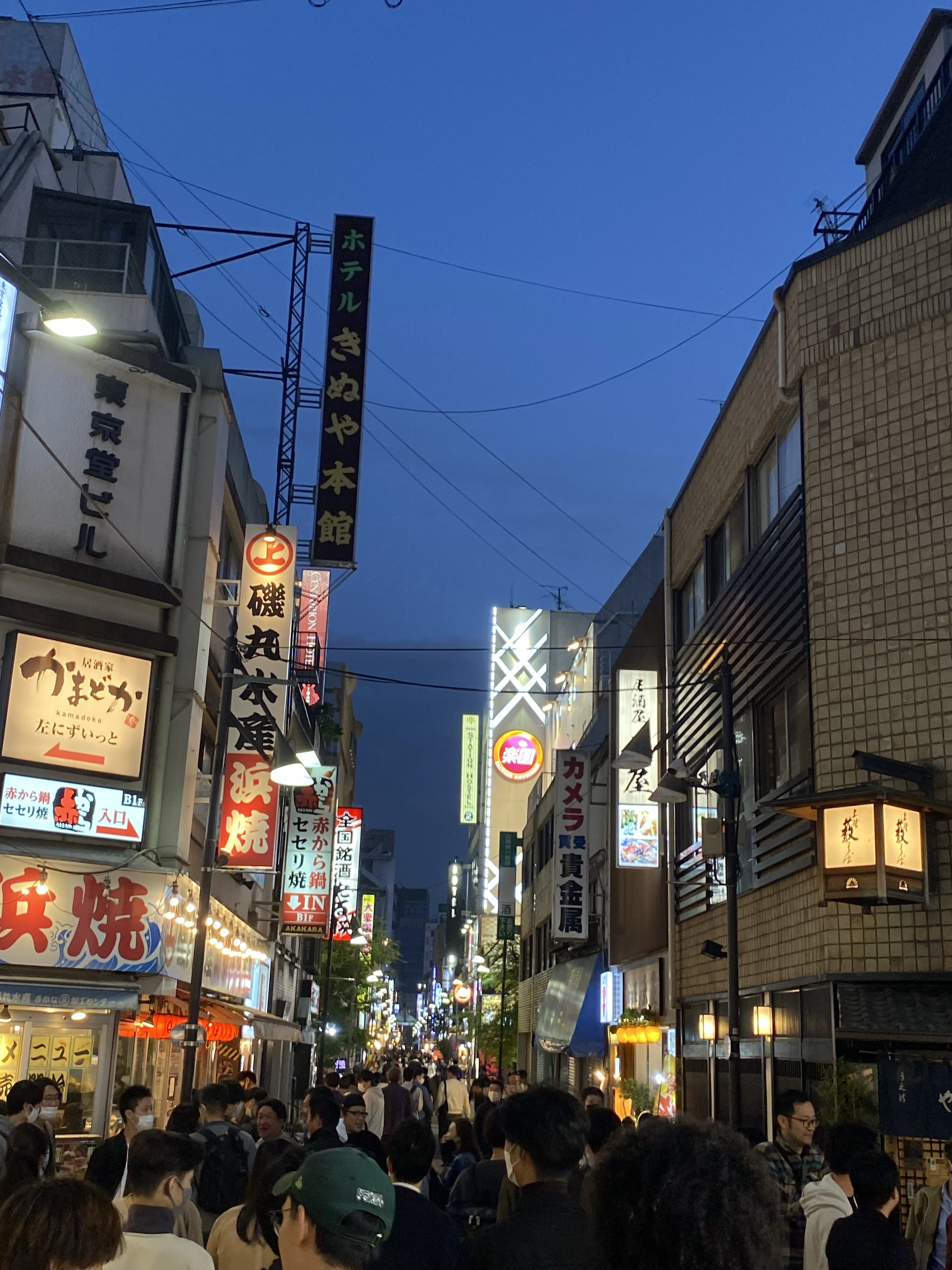
Again we found a little cafe with a table outside and ordered a round of Japanese whiskey. The whiskey was tasty and gave us a little warmth as the night was cool and we did not have warm jackets.
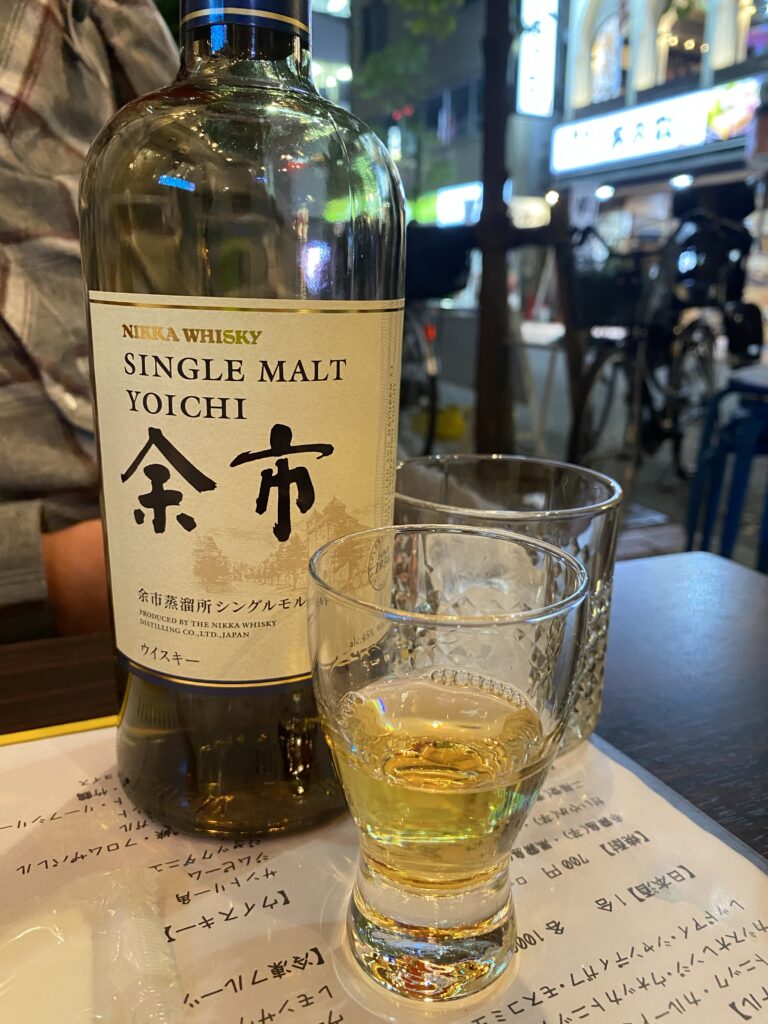
We walked around for another 30 minutes or so and decided to take the train home. We walked around the station hoping to find a dining establishment with a table outside. (We still opt out of indoor dining due to COVID precautions.) With none to be found, we boarded a train back to Yokohama.
Since we were still hungry, we decided to continue on the train to Yokohama’s sizable Chinatown, which was on our list to visit.
Chinatown, Yokohama
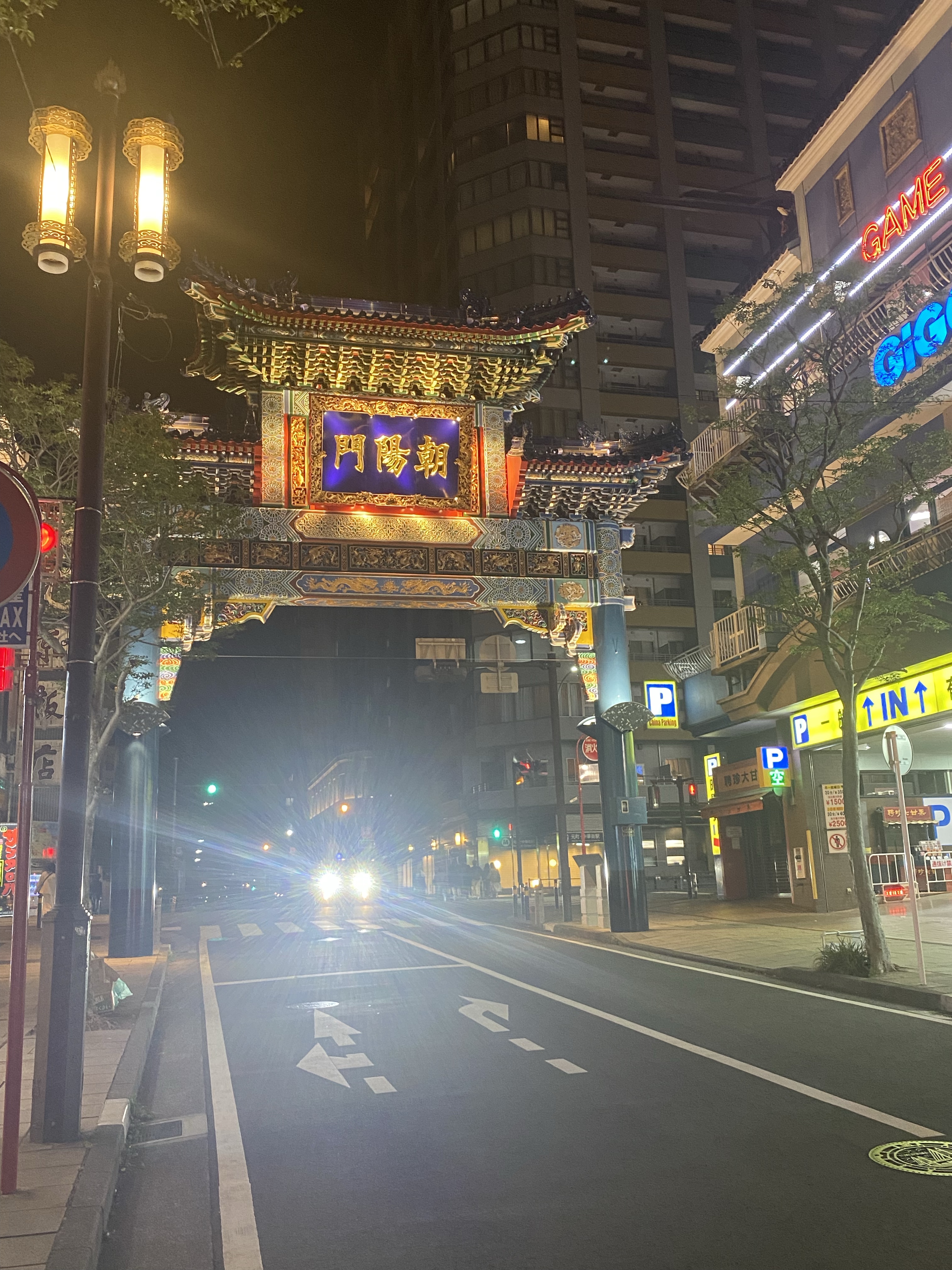
This Chinatown is the largest is Japan and dates back to the 1850’s when Japan opened for foreign trade, Yokohama transformed from a fishing village to a major port city, and Chinese immigrants came to seek employment and fortune in trading.
We were still feeling snacky so we stopped for some street food. I got the tastiest freshly fried chicken! Yokohama’s version of Taiwanese fried chicken is a large, breaded cutlet, similar to a schnitzel. It was about as large as my head so I shared it with Corey. We wandered the streets while nibbling on my giant chicken, still steaming from its time in the deep fryer.

Corey ended up buying soup dumplings. They were warm and delicious. After our food tour we decided to walk the 20 minutes back to the hotel and go to bed.
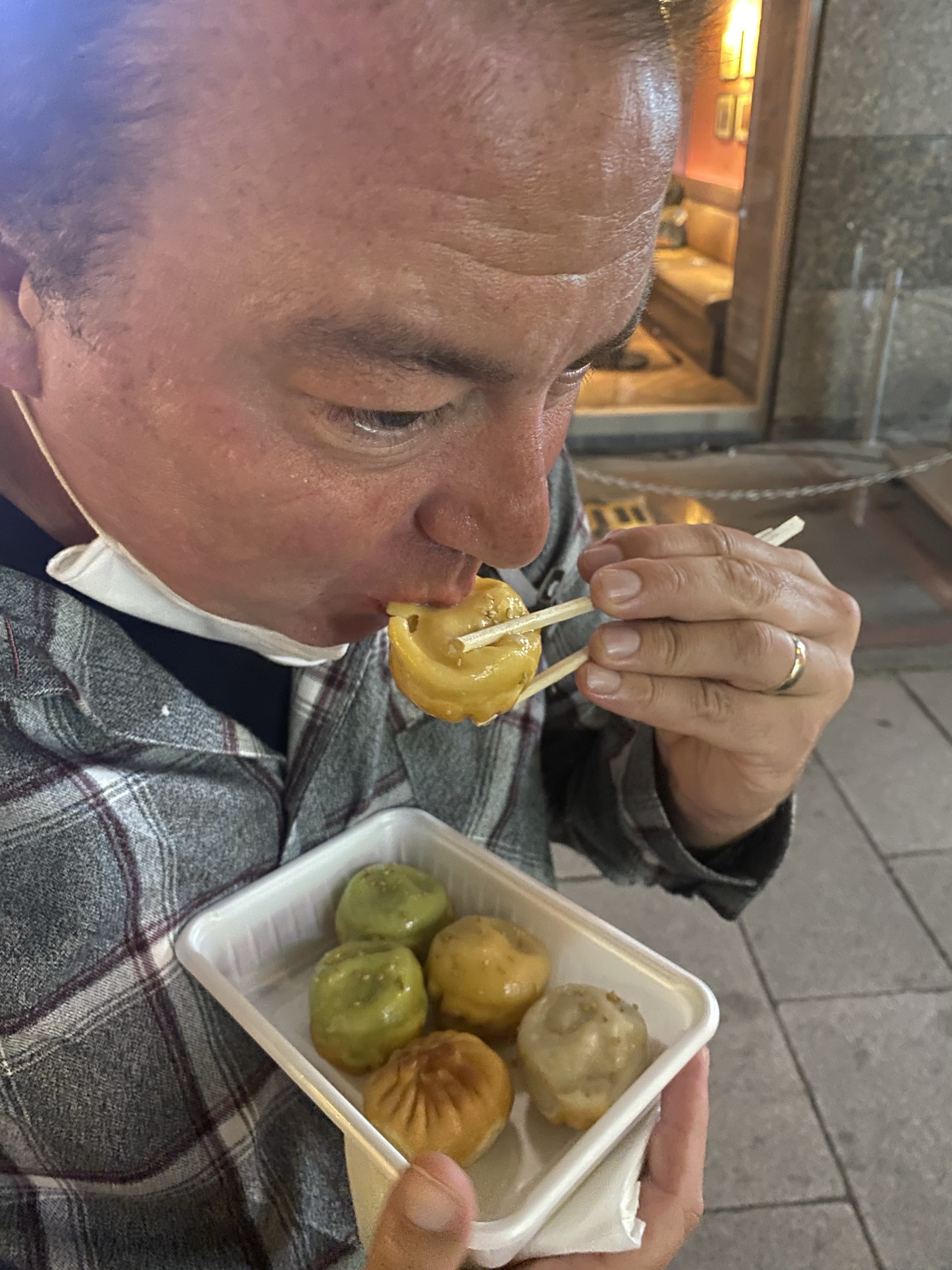
We walked 8.5 miles and had another fantastic, food-filled day in Japan.
Day 4
We slept in again and headed out on the train at midday. It was a little later than we wanted since we were headed to the market to eat fresh seafood. If we wanted it really fresh then we would have to arrive at 3 AM but that was not our plan… and not really likely to ever really be the plan for me!
Tsukiji Fish Market
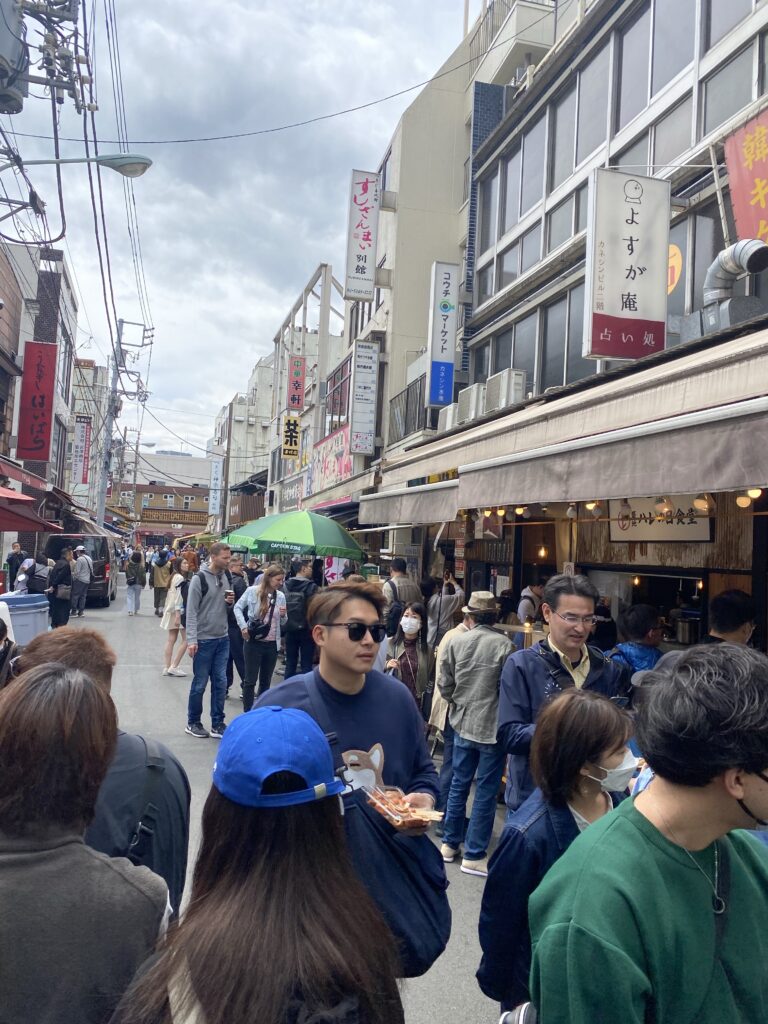
Captain Greg (not really a captain but a cool guy), a friend of ours from cruising on the Carnival Pride last year, recommended that we check out the Outer Fish Market. It was right up our alley! Plus I really wanted to eat sushi in Japan.
Tsukiji’s “inner market” used to be the site of Tokyo’s wholesale fish market, but in 2018, the wholesale market moved to Toyosu Market, taking the famous tuna auction with it. The old “outer market” remains a tourist attraction for fresh retail fish and seafood restaurant
The train from Yokohama only took about 45 minutes. We soon arrived with tons of other tourists and large tour groups. It was a Sunday so many places were closed, but plenty were open and it was absolutely still worthwhile.
We arrived hungry and ready to mingle with vendors. Our first buy was a tuna bowl. I was really craving tuna and it exceeded expectations. Flavorful tuna on top of rice with soy sauce and wasabi. Corey opted for the fattier otoro tuna which was also good. The two bowls cost about $15 USD.
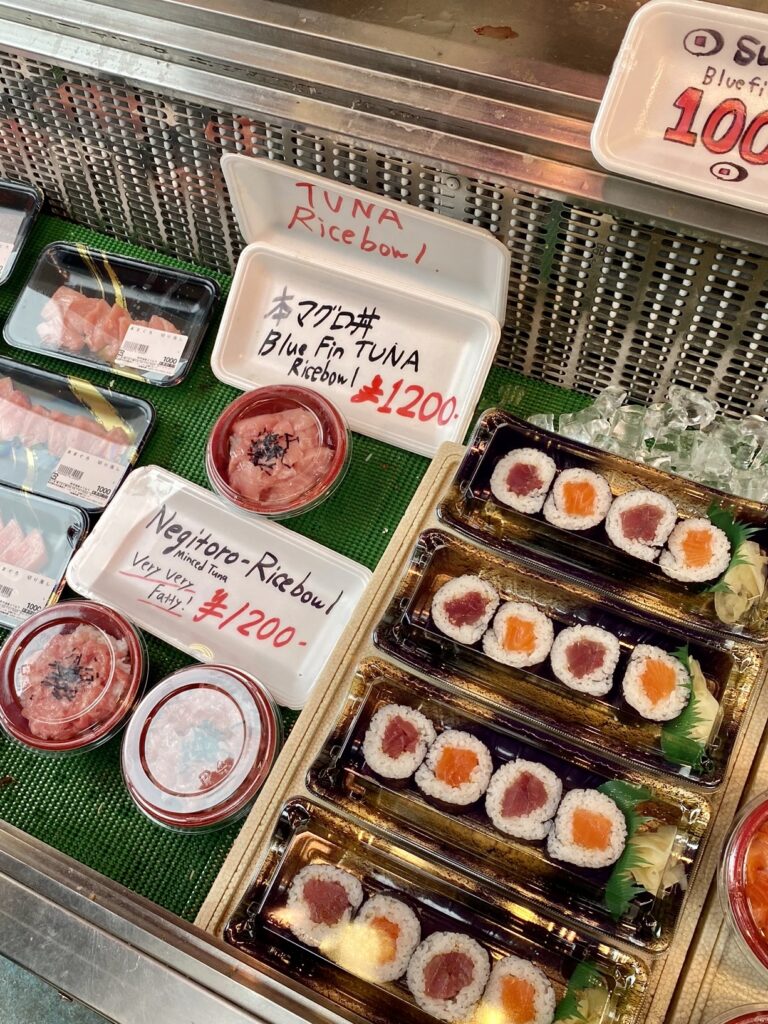
We weaved into smaller corridors looking for better deals and more tasty food options. It was a bit unconventional, but our next stop was for wagyu and wine. It reminded me of the time I ate chicken at a beef festival in Korea, but why not have delicious steak at a seafood market?
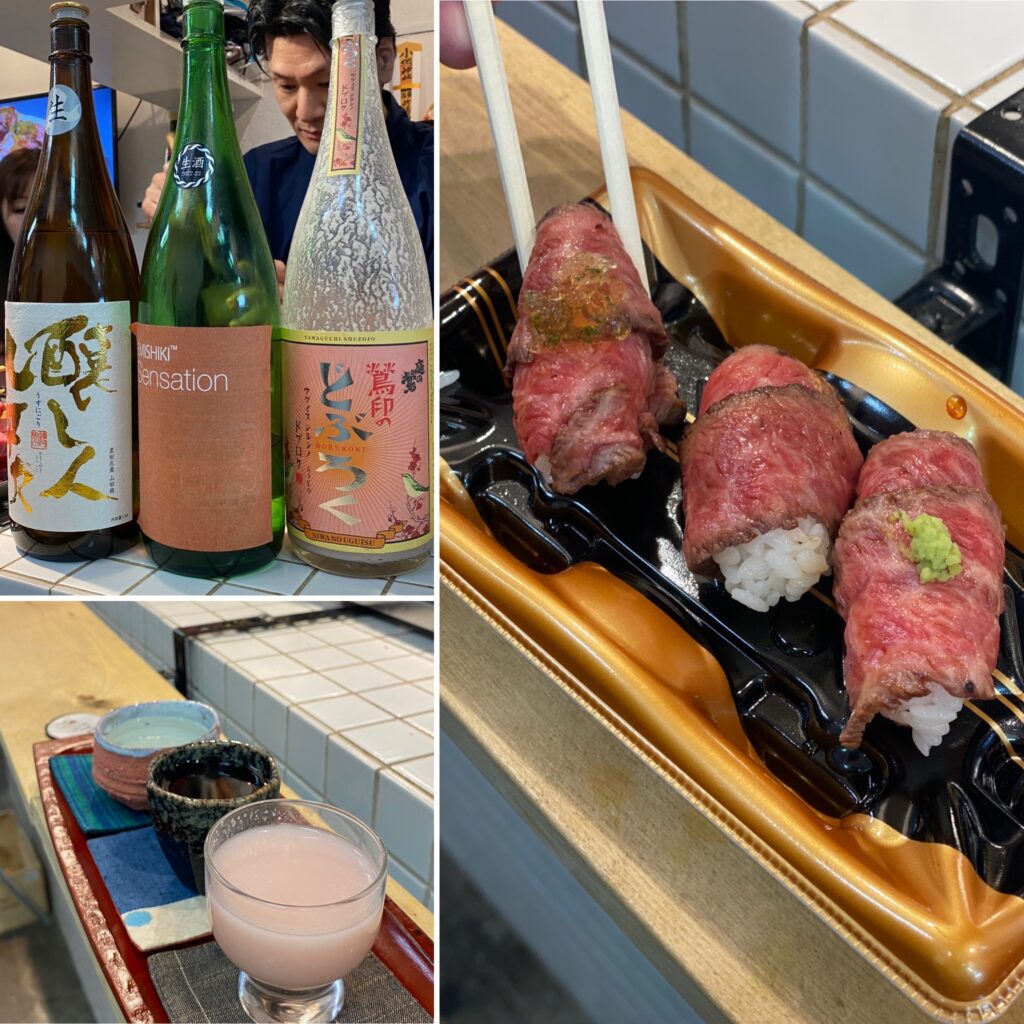
Thailand is not known for their tasty beef products so we were quite hungry for a good steak! We tried the wagyu and sake sampler.
We then tried to cover all of the various streets and walkways in the market. This was difficult because there are many nooks and crannies! We passed by sushi counters located on the sides of crowded hallways, and small establishments that were only identifiable by the long lines outside their entries. From various stands we split oysters, scallops, and a “spicy soup” that turned out to be Korean-style seafood jjigae.
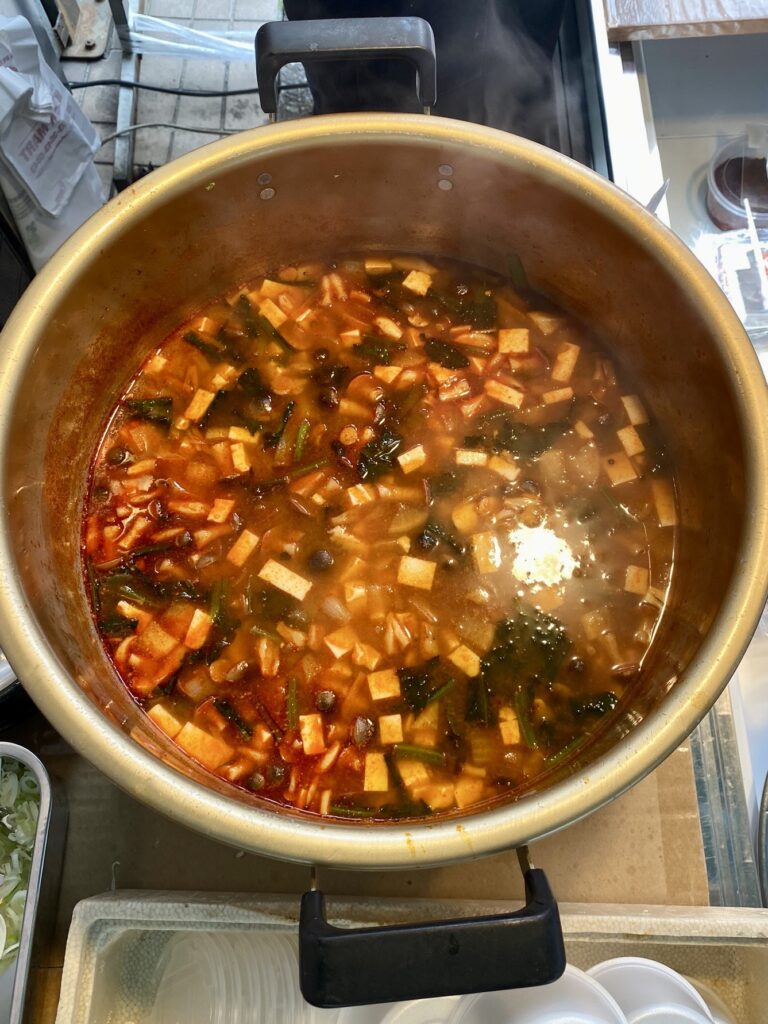
I still wanted more sushi. Finally, we found a little gem with a restaurant upstairs with a little patio. The sun was shining and the fish was great! It was turning out to be a great day!
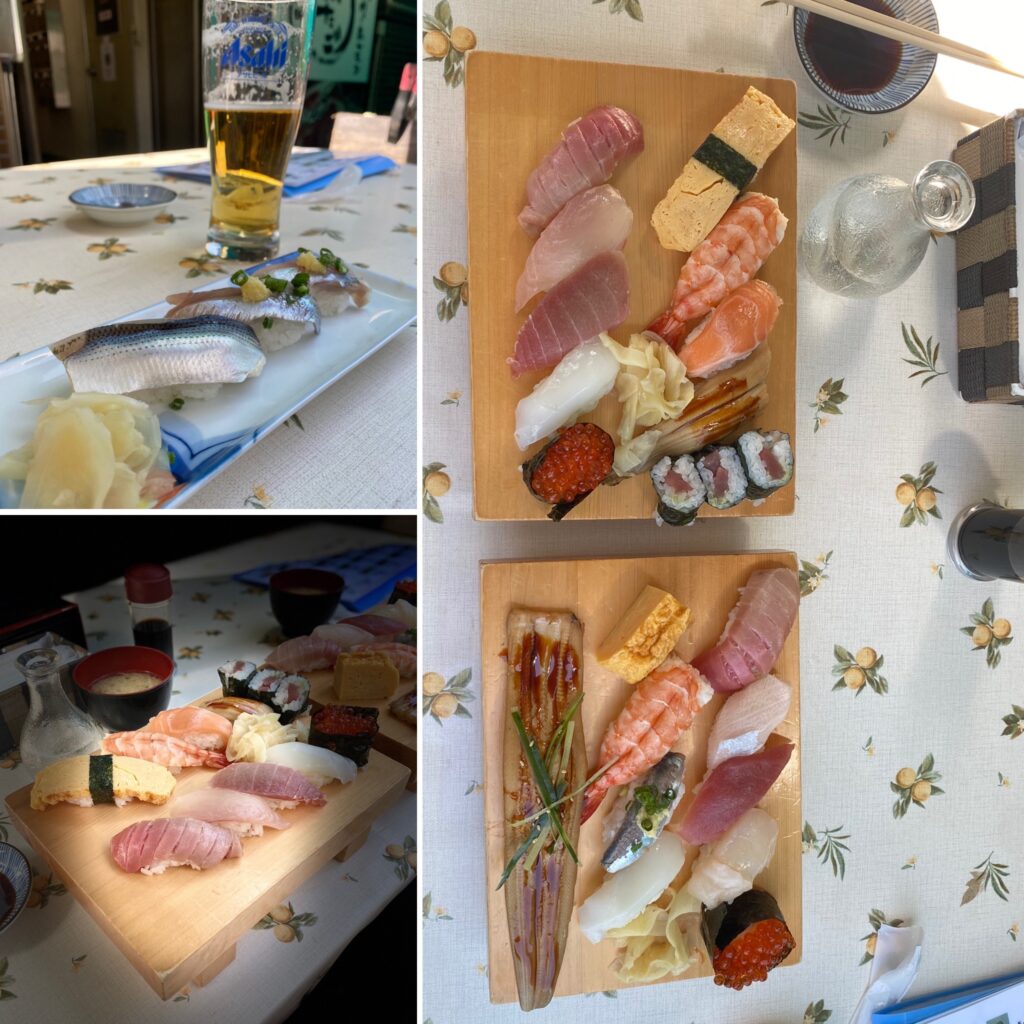
This place was old school and has an older bathroom. Check out the toilet and sink combo below!
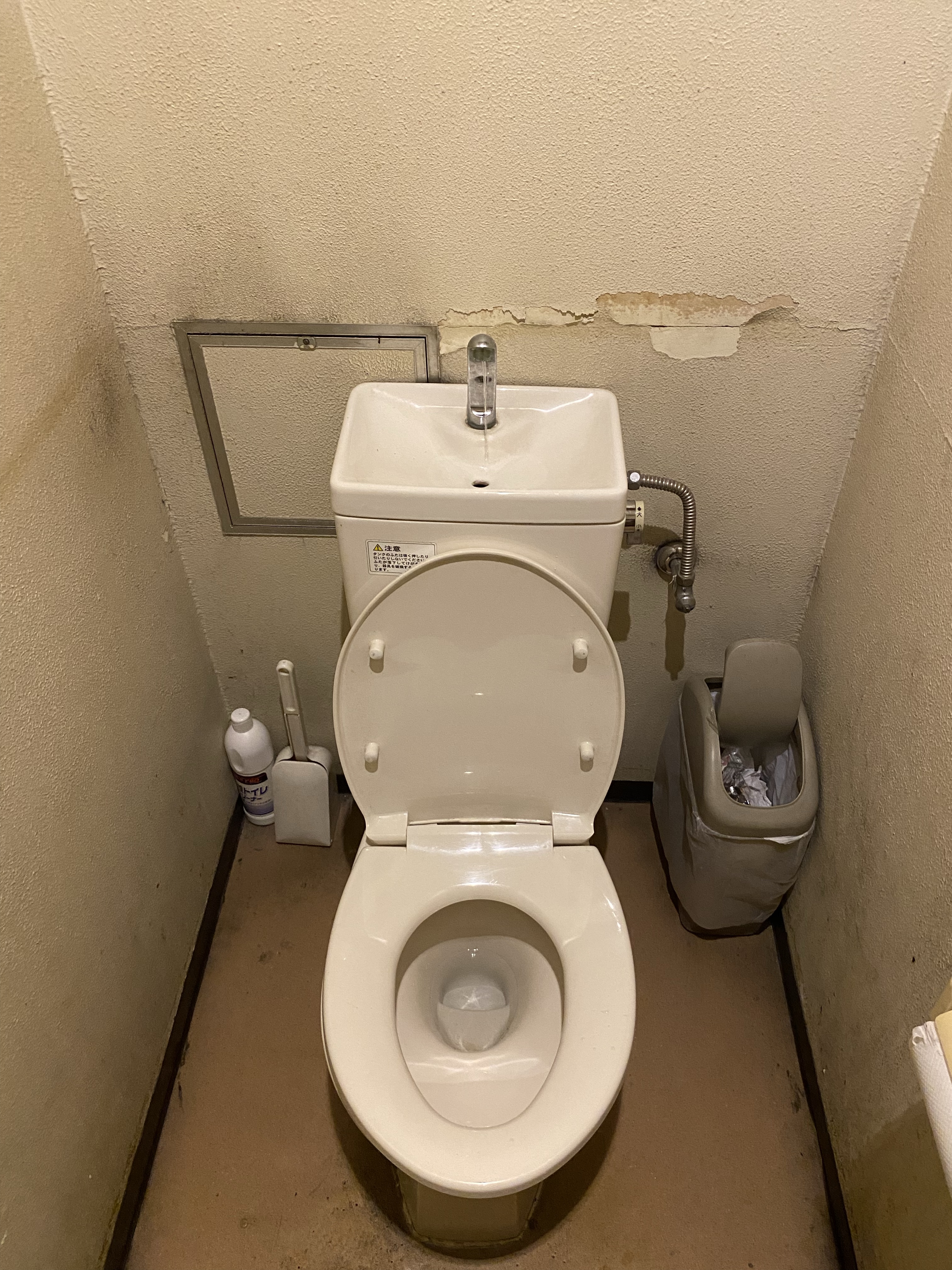
With bellies full of fish, we walked off lunch by strolling through the Ginza neighborhood known for top-tier fashion brand stores. We did not even window shop as that stuff has little appeal to me, but the vibe appeared very similar to retail areas in other large cities.
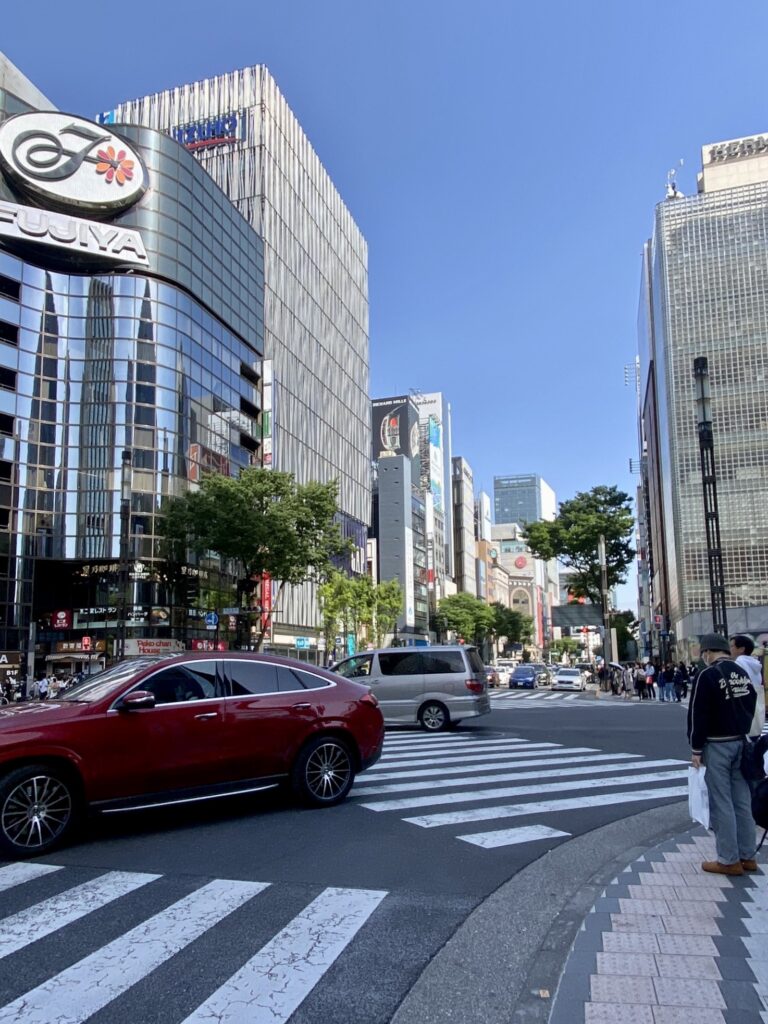
West of Ginza, we detoured through the Yurakucho neighborhood and down a fun street, where there are eating establishments located under the railroad tracks. This neighborhood looked like it would really come to life after dark, and is the home of a street called Yakitori Alley after the abundance of chicken skewers sold there.
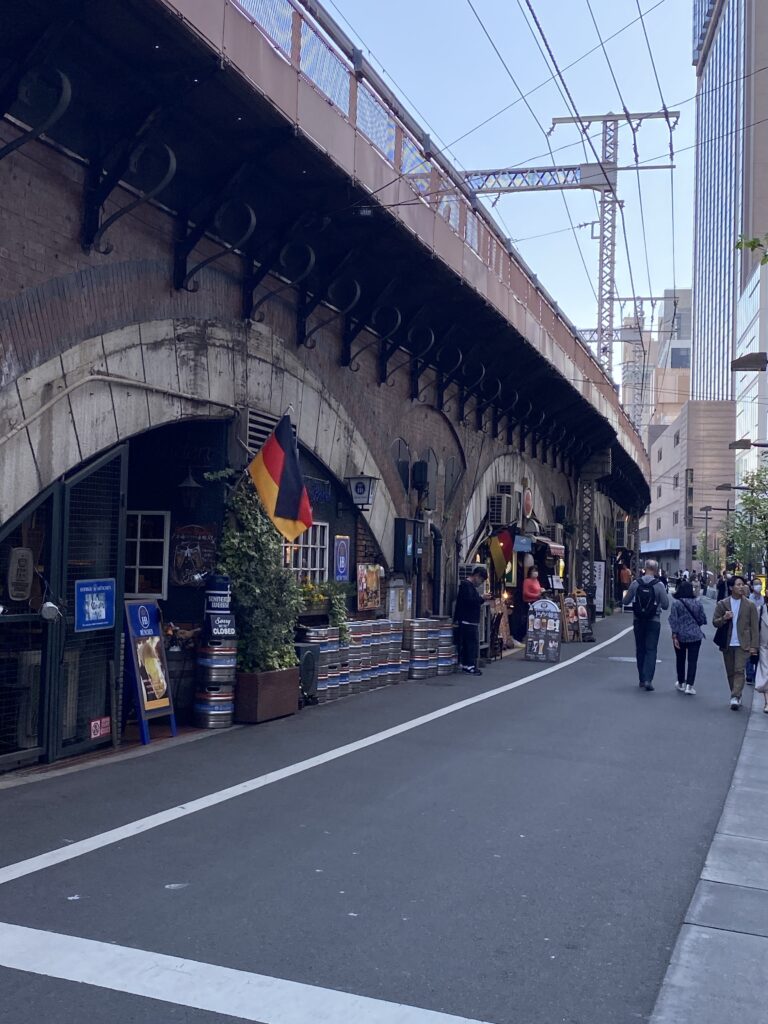
We then detoured on to the plaza outside the Toho Cinemas Hibiya, which is where we thought the giant Godzilla statue was located, but we were disappointed to see only manicured gardens, a theater, a movie theater, and mall. There was a smaller Godzilla statute inside the movie theater, but it was not what we were looking for!
We then crossed the street to approach our next destination, Hibiya Park. We sat on a bench and observed the Japanese garden scenery, enjoying the fresh air and sunshine. With the abundance of air pollution in Bangkok, and the previously cloudy skies in Tokyo, we had not seen blue skies in weeks!
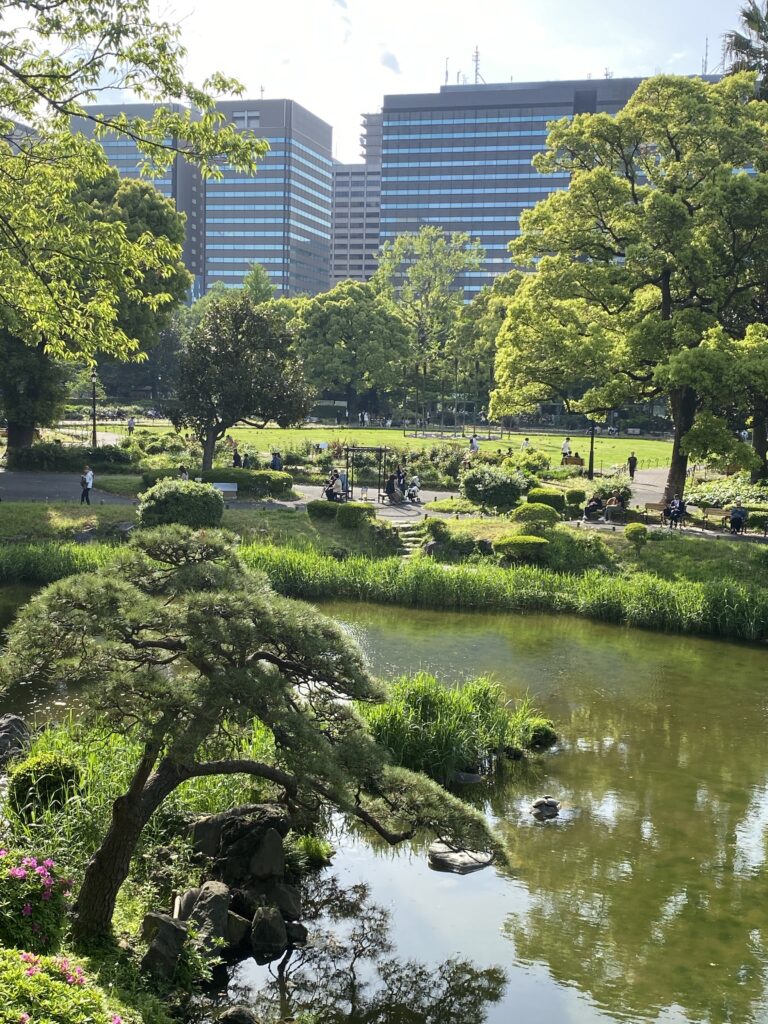
After meandering through the paths, we crossed the street, crossed a moat, and came to our next destination, the Imperial Palace grounds.
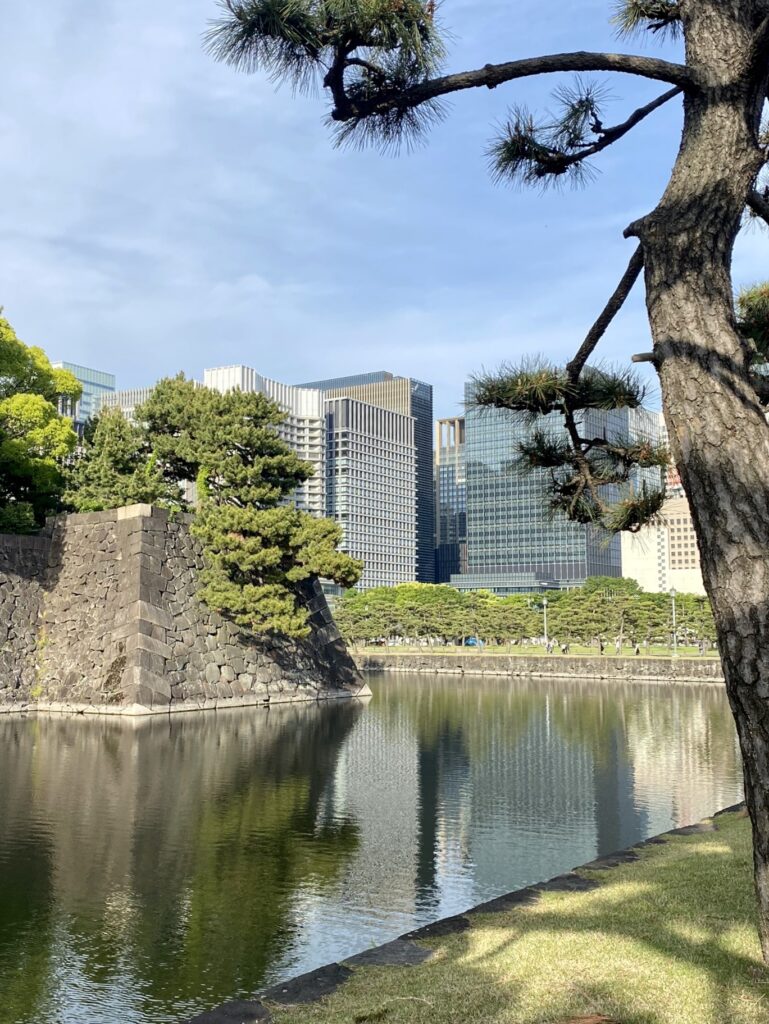
The streets through the grounds were free of vehicular traffic and many cyclists and runners were enjoying the wide-open street spaces surrounded by lawns and trees.
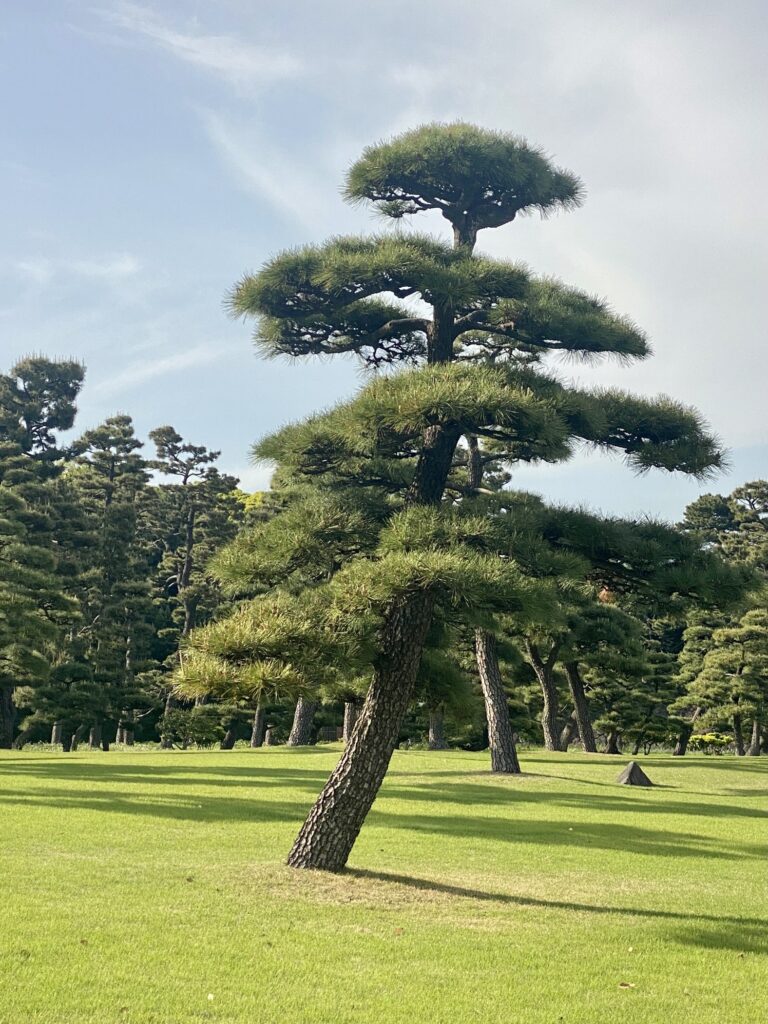
We walked to the bridge near the inner moat and caught a glimpse of the palace. The grounds are beautiful and are landscaped with tree-filled segments. Some areas allow for picnicking but others are forbidden. The area by the inner moat had a wide gravel path that we followed for awhile. Ker-chunk, ker-chunk, we crunched our way in the gravel until we arrived at the next bridge and caught a glimpse of the admin building across the way. At this point we decided to exit the grounds. It was about a half mile to the train station and a half mile in the other direction to the East Gardens. We decided to visit the remaining portions on our next Tokyo visit. Our advice is to treat the grounds as a nice walking path to get to the East Gardens, with the palace itself being generally inaccessible.
Shinjuku Neighborhood
So we made our way to and through Tokyo station and hopped on a train to Shinjuku. What an epic change in vibe!! Shinjuku is loud, bright, crowded, and grimey. It was late afternoon and we could tell this was a nighttime neighborhood. It was fun to explore yet another part of Tokyo so different than what we had already seen!
We walked out of the station shoulder-to-shoulder with the throngs of people from all walks of life. We got to see the 3D billboard that I had previously seen online. Video here. So cool!
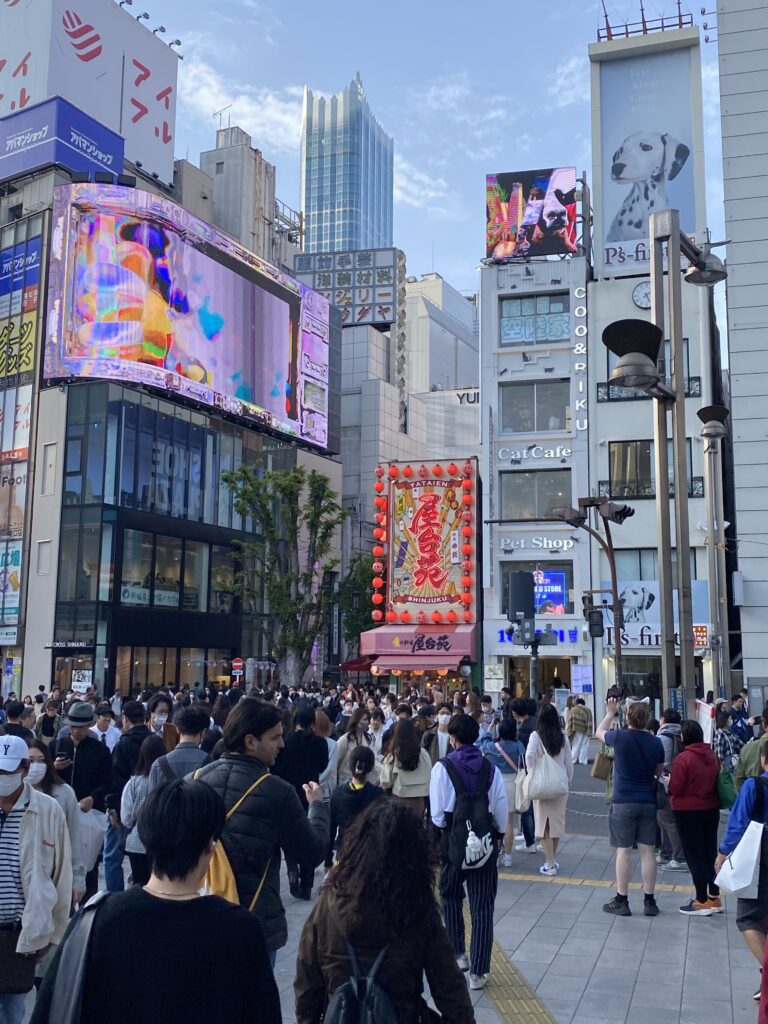
We continued down the street and were surprised to find Godzilla climbing a tower! We found him after all!
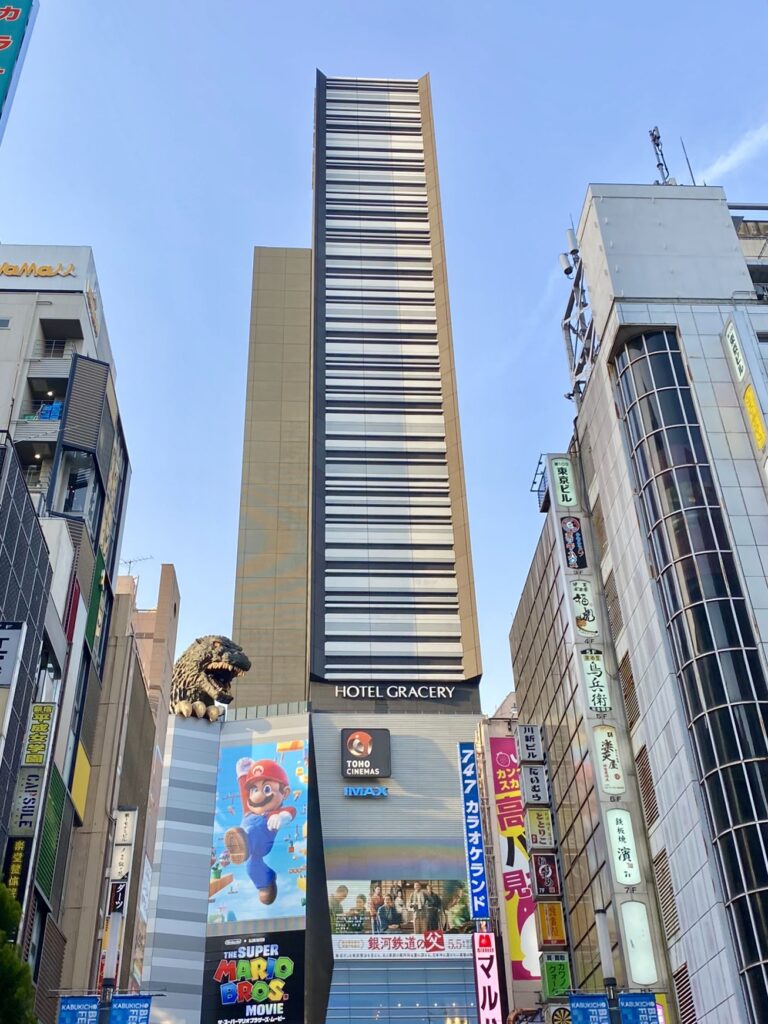
After turning a corner we encountered the clubs. It was still early so nothing was open but we stopped to check out all the signage and photos of hosts. The host club phenomenon is one that we will leave for others to explain.
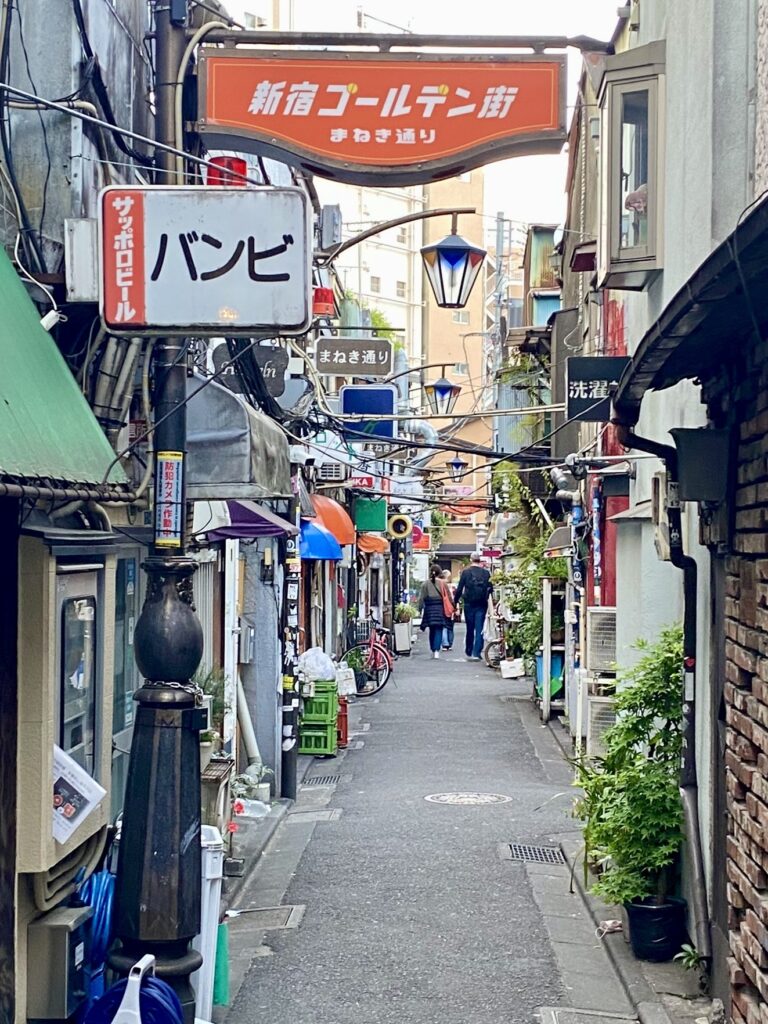
Corey then led us to an interesting historic area called Golden Gai, a crowded walking district comprised of microscopic drinking establishments. In some cases there was one bar directly on top of another bar. Some bars were open to the public but many others were for club members only. Many that were open have a cover charge, which is common for Tokyo. Drink prices are generally more expensive when there is no cover charge, so the cover charge encourages session drinking instead of bar hopping. We weren’t interested in having a drink in a tiny room with no ventilation, but we enjoyed walking down the streets checking out the vibe and reading the varying signs on the doors with all the rules.
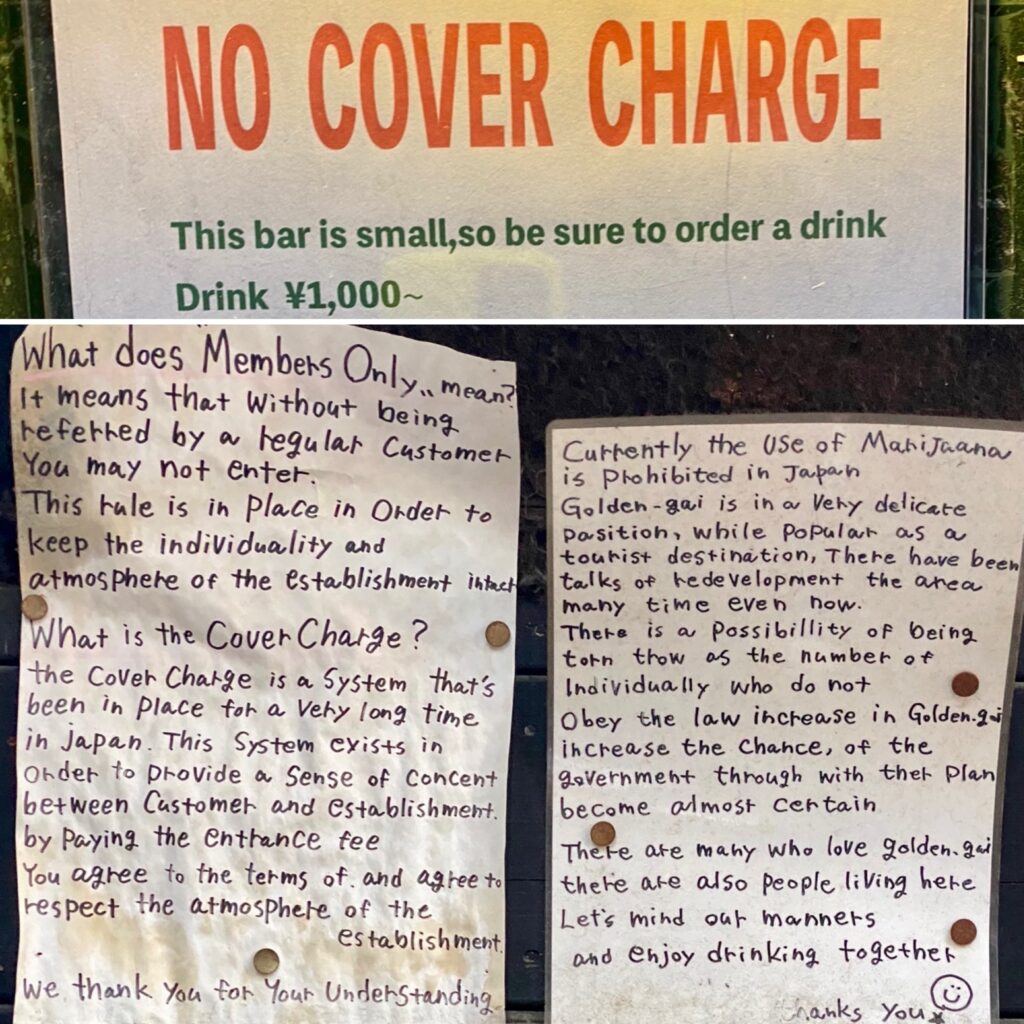
After that we walked to the train station and headed back to Yokohama. We stopped for Family Mart again for hot chicken snacks and called it an early night.
We walked seven miles, which was a lighter day on our feet, but we still covered a lot of ground in Tokyo neighborhoods.
Day 5
It did not take long to pack up our belongings since the room was so small and efficient. Most of my stuff was still in the various packing cubes anyway.
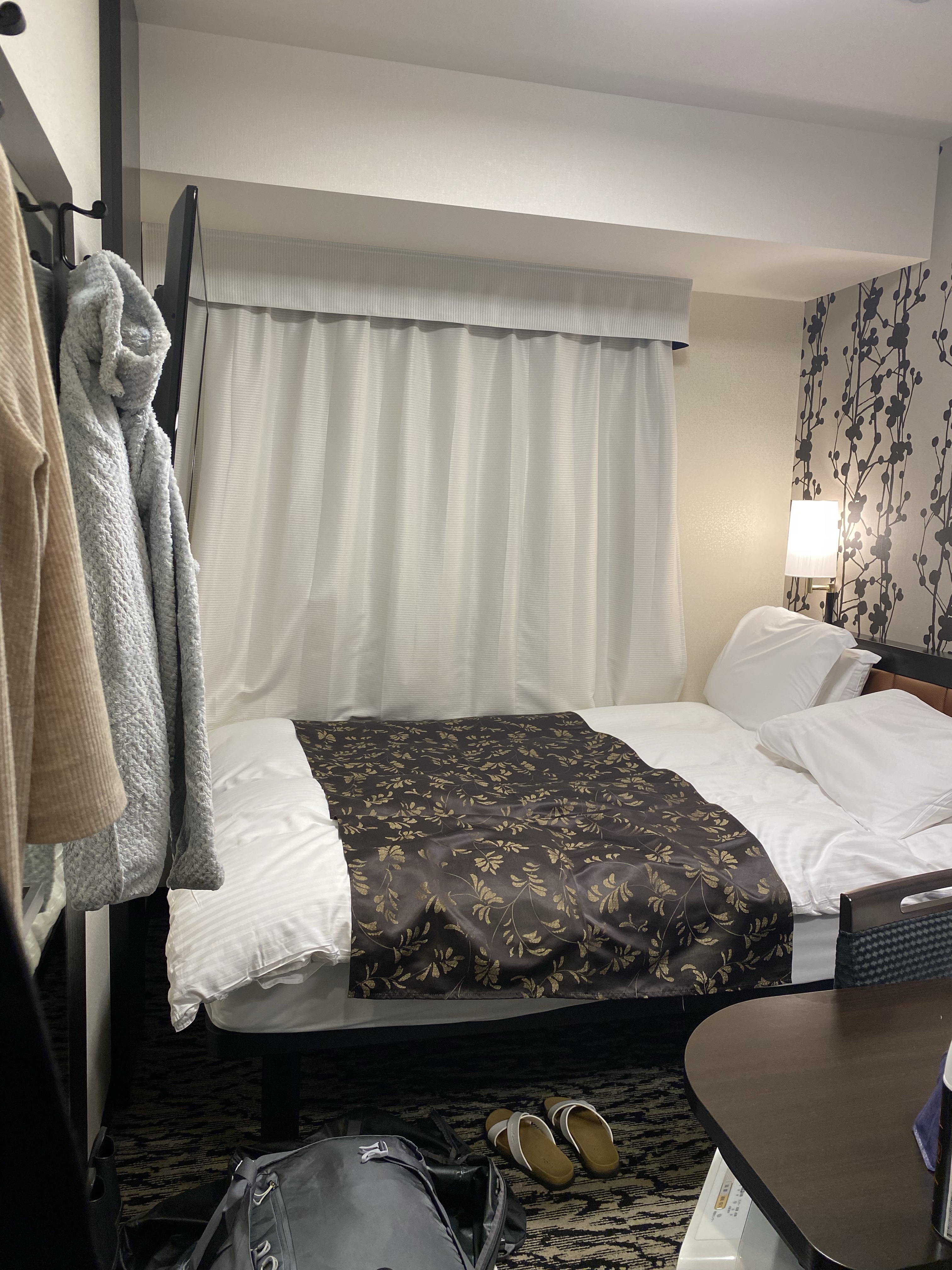
The hotel stored our luggage for us as we explored Yokohama before boarding the ship. We had a late check in time at the pier so we spent the day walking around the city. The most exciting thing we did was visit the Cup Noodles Museum.
Cup Noodles Museum
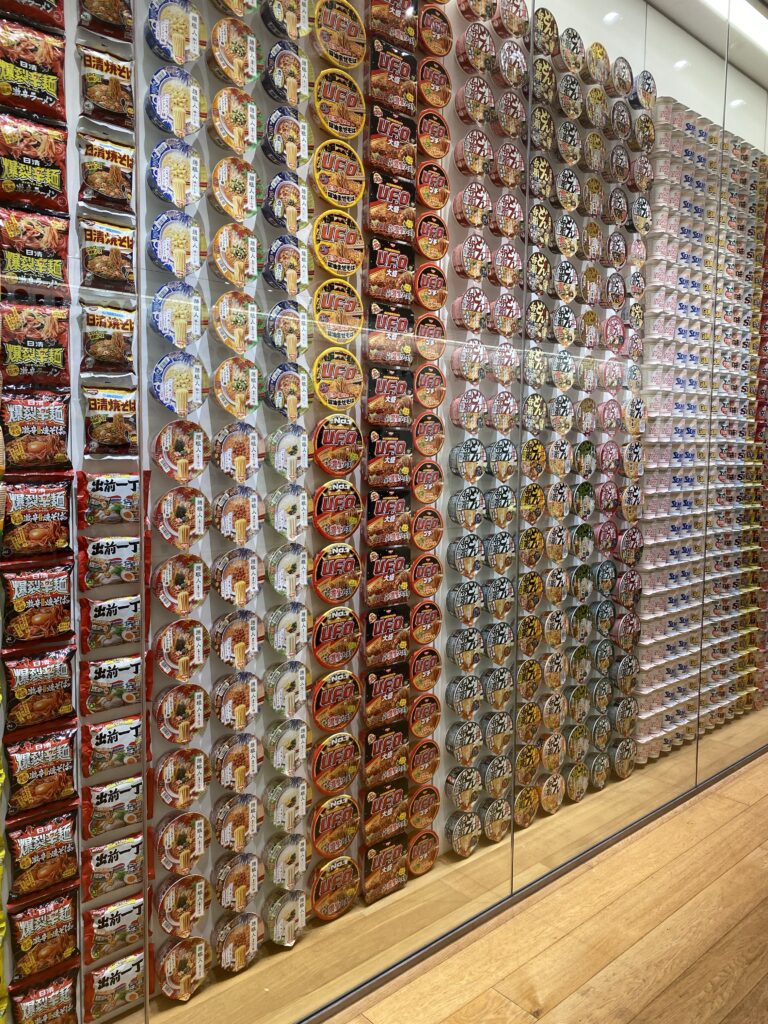
It was just down the street from our hotel and highly recommended by our friend, Krista. It’s a large building but a small exhibit that walks visitors through the invention of instant noodles, the advance from packaged noodles to the familiar cup, and the socioeconomic impact from this creation. It was well laid out and an insightful journey.
The real highlight for us was the interactive component on the third floor. For an extra $3.50 USD per person, visitors can create their custom Cup Noodles.
Check out our reel here on how we did it.
The fourth floor houses a restaurant that is divided into eight different countries, each serving up their own noodle soup specialties. After our tour of Southeast Asia, it was so cute to see how each stand conjured the spirit of noodle vendors from all over!
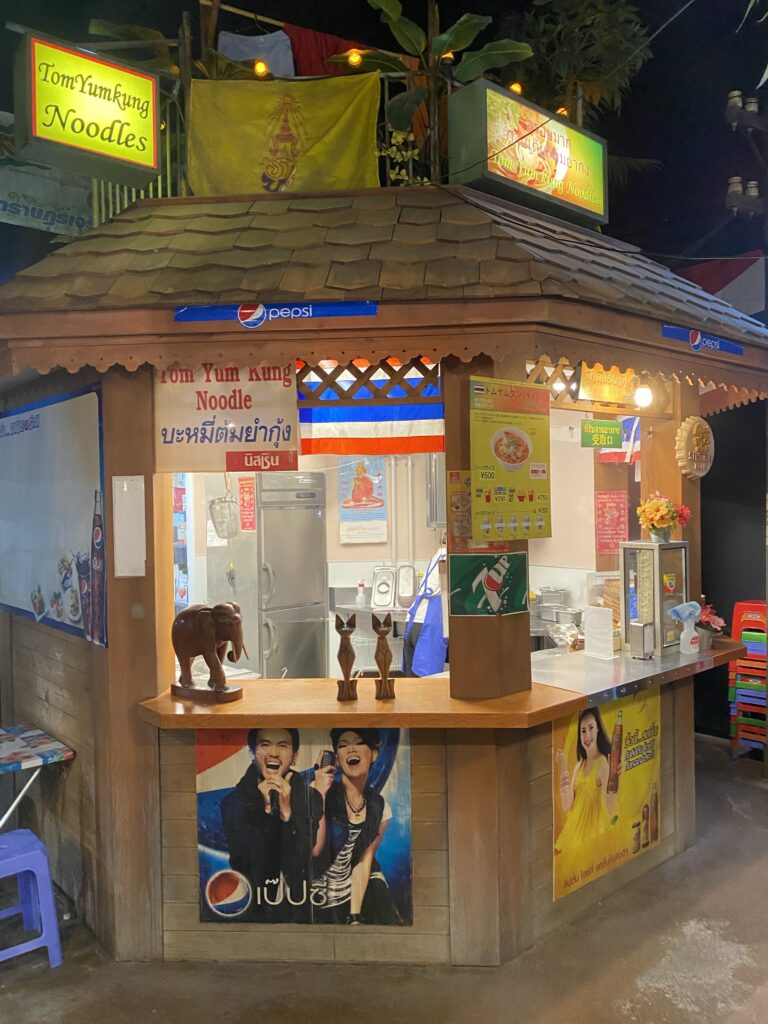
After the museum we grabbed lunch at a nearby mall then walked the waterfront. The waterfront is green and nicely manicured. There are clean walking paths and we happened to be there during a floral garden competition, giving us plenty to look at while we walked.
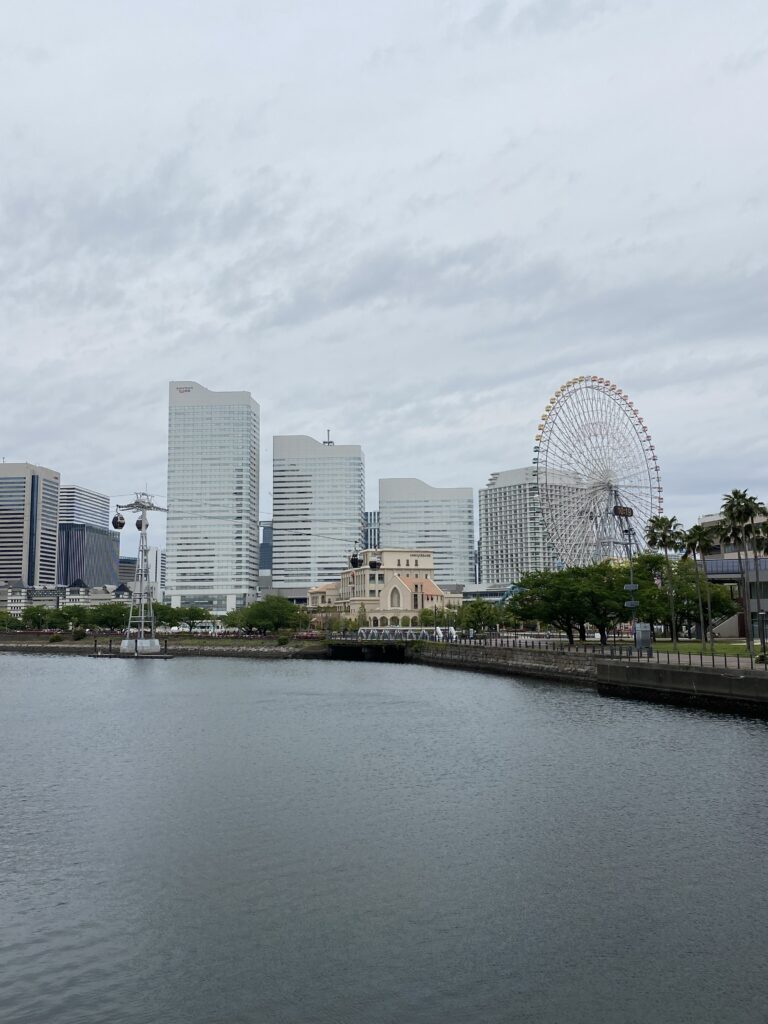
Overall Yokohama’s waterfront reminded us of a port town like Bremerton, Washington. The waterfront is mostly functional, meaning that it is mostly quiet. The walking paths are used but there is not much to do.
We made our way over to the Red Brick Warehouse which is a historic building turned into a bougie craft mall. I eyed some local souvenirs but then really found what I was seeking: dessert!
Granny Smith Apple Pie is a wonderful bakery that specializes in a variety of apple pies. We got the four-slice sampler so we could try everything. When the cashier asked if we needed four forks, we replied with a giggle that we only needed two. She giggled back, we grabbed the bag and we enjoyed our pies out in the sun watching tourists stroll by.
The End
That concluded our land based Japanese journey. Five days is not enough to fully experience any country but we feel like we got a good sense of Tokyo (and Tokyo Disney) in that timeframe. We don’t always have a month to explore, and even if we did, we still would not be able to see and do all the things. (Unless we visit Micronesia or San Marino!)
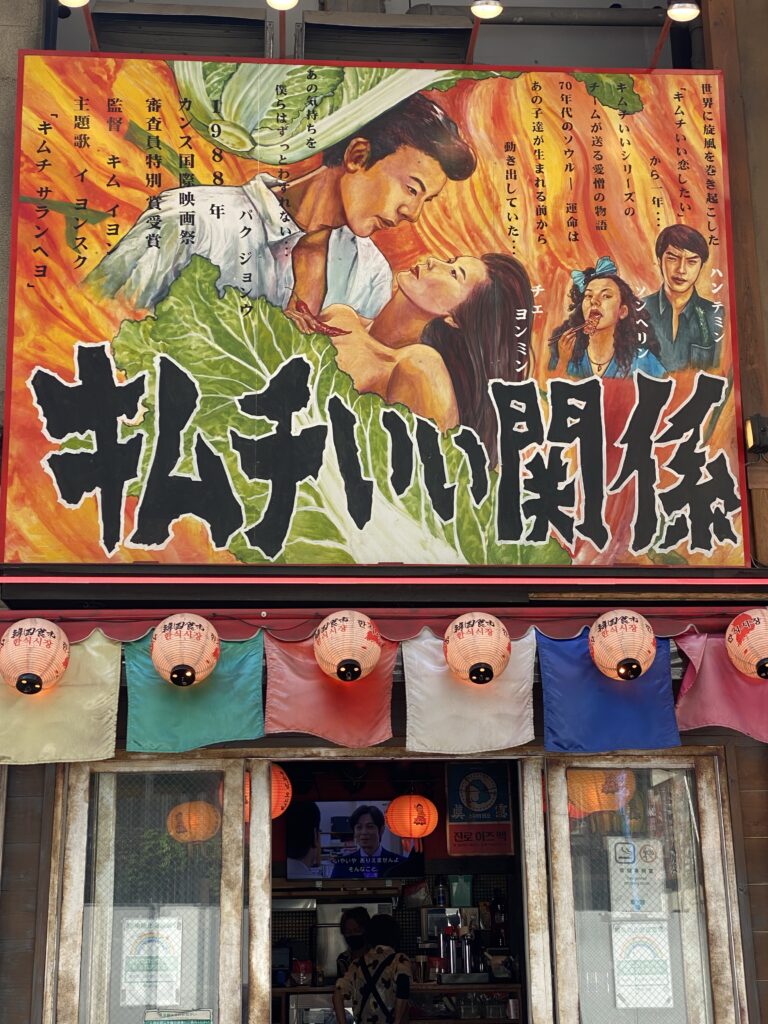
We hope to explore more in Japan one day. On a future trip we will not feel compelled to return to Tokyo since we thoroughly explored many neighborhoods around the city. Things that do interest us are rural towns with natural hot springs (onsens), Japanese beach towns, and opportunities to explore Japanese history away from the usual tourist spots. If we do find ourselves in Tokyo we would head back to the Tsukiji Fish Market. It was really a highlight for us!
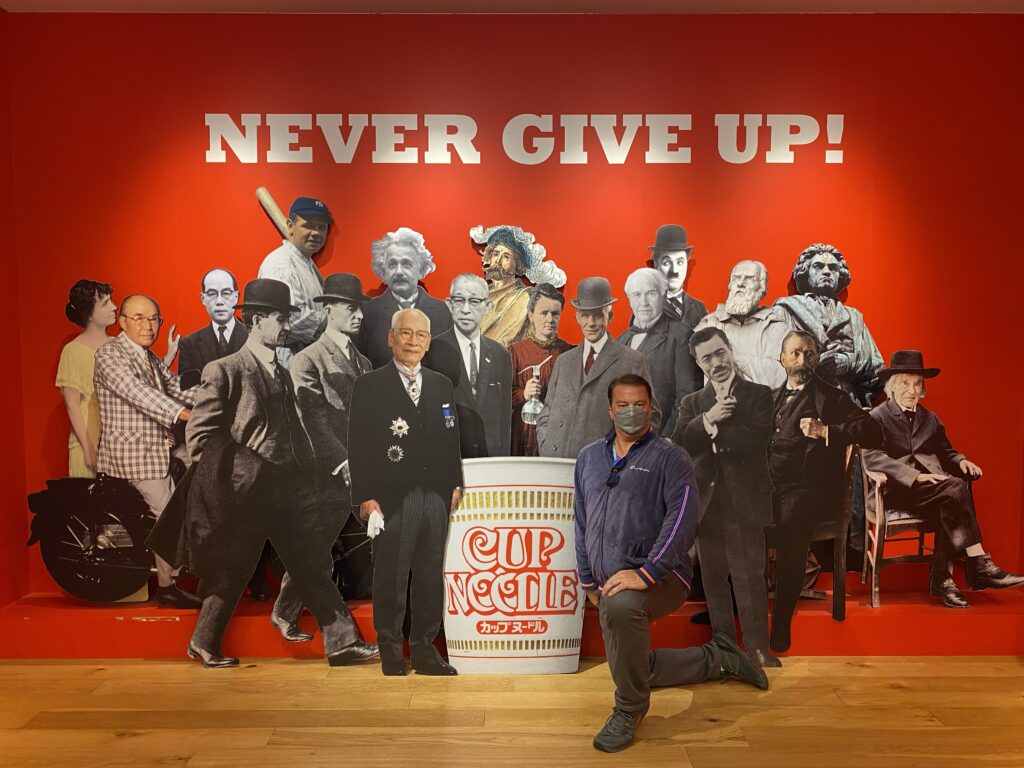
Such a thorough and informative post about your trip! Toyko looks amazing. The flight looks comfy, and I have never seen that nice of a food set up on a plane. I’d like to get to Asia one day!
As far as big cities go, Tokyo has a lot to offer! A lot of people say to skip it, but I’m glad we went.
What a nice surpise to come across a GoWithLess shout-out! 🙂
We LOVED DisneySea and Granny Smith’s. Hard to believe that Japan does Disney and apple pie much better than the US (but they do!).
It is crazy but you’re right – apple pie and Disney were both amazing!
GWL has been such a nice connection tool for us. I’ve really missed my friends while traveling and we’ve met so many wonderful people through the community you’ve created. Thank you!!